

What Does TRAVEL Mean on a Mountain Bike: Is More Travel Better?

I love riding my mountain bike down steep hills and off of lifts but I have noticed that even after adjusting my current suspension I am bottoming out on relatively small drops. That is why I decided to upgrade my suspension to have more travel distance. In this guide I will explain what that means for various kinds of bikes and suspension set ups.
What is “Travel” on a Mountain Bike?
Travel is simply the maximum distance that either the front or rear suspension of the Mountain Bike can compress, when absorbing force, before bottoming out. The higher the travel the more force the suspension can comfortably absorb. The lower amount of travel the lower amount of force absorbed.

Types of Mountain Bike Suspension
There are three types of suspension setups that any Mountain Bike might have (I will get into the third later). For right now it is most likely that your bike will either have a “Hard-Tail” or “Full Suspension” setup.
The difference between a hard-tail and a full suspension mountain bike is that on a full suspension bike there is a rear shock absorber as opposed to just the front fork. A hard-tail, therefore, will not have rear suspension components and will simply have a “hard” rear frame.

The differences between hard-tail and full suspension…
Price: A full suspension mountain bike will be much more expensive than a hard-tail mountain bike.
Comfort / Downhill Capability: A full suspension mountain bike is going to be much more comfortable to ride and be able to handle much higher drops. Although, this does come at the cost of reduced ability to put power into the trail.
Weight: A full suspension is going to add the components to your mountain bike so by definition will be heavier than a hard-tail
Maintenance: Again, the more parts you add the more that can go wrong and the more that needs to be adjusted.
Given this distinction between hard-tail and full suspension mountain bikes the next two sections are going to be split between talking about front and rear suspension components.
Suspension is Fun to Talk About
- Mountain Bike Travel – Read What is Travel on a MTB and is More Better?
- What is Lockout on a Mountain Bike Fork – all about when to use it.
- Selecting a MTB fork is confusing, let me help with – C hoosing a Mountain Bike Suspension Fork
- Wheels and Hub widths – Why is this so confusing? Read – How to Adapt a MTB Wheel to a Boost Fork
Front Suspension and Travel Distance on an MTB

The front suspension, or forks, of any mountain bike is going to be split into a few components. The steerer tube which goes into the center of the crown which branches into two stanchions. These stanchions are what slide into the brace and slider which ends in two dropouts that attach to the wheel.
The main way that riders upgrade their front suspension is by increasing the travel of the stanchions. In essence, this is increasing the length of compression that the front suspension withstands. A shorter travel will be more responsive and allow you to put more power into the trail while a longer suspension is better for rough trails and high lifts.
Here is a chart of common travel distances on the front suspension of the mountain bike…
Another thing that is important to keep in mind is the diameter of the stanchion tubes. As the amount of travel increases so does the diameter of the stanchion to maintain durability and stability.
Here is a chart of the common stanchion tube diameters on the front suspension of the mountain bike…
As I mention before, many riders will upgrade their mountain bikes front suspension by increasing the amount of travel that the suspension is capable of. This is really only done in two scenarios as if it is done without thought then it could actually hamper performance.
- When you have anything other than a downhill mountain bike and want to try to imitate one.
- This one kind of ties in with the previous. But, travel distance is increased when a rider desires a more comfortable ride and intends to do mostly downhill riding with large drops. If there is a large amount of uphill riding then a long travel will only make it more difficult to ride the bike.
Something that is often mentioned on MTB suspension is a “Lockout” I explained what it is and when to use your lockout in another article on this website: What is a Lockout Fork and When to Use It
Rear Suspension and Travel Distance
Now this is where things can get really complicated. This is because there are around five main rear suspension designs that manufactures implement in mountain bikes. They are as follows…
Single Pivot: In this design the rear shock of the mountain bike is connected to a swingarm by the titular single pivot point located just above the chain rings. This is the simplest rear suspension design and therefore is often the cheapest to manufacture.

The downside of the design is that the compression is going to be consistent throughout the travel of the shock as opposed to some newer designs which increase the stiffness of the rear shock as it becomes more and more compressed to hopefully prevent bottoming out.
Linkage-Driven Single Pivot: In this design there is still a swingarm connected to a single pivot point. The difference is that there is some kind of linkage which allows the manufacturers to manipulate the compression curve which was previously constant throughout the travel.
Horst-Link / Four Bar: Put simply, the rear axle of the mountain bike is not directly connected to the mainframe of the bike. This will reduce pedal bob (the bob that comes from the rhythmic nature of pedaling) and will also allow the manufacturer to manipulate the compression arc (amount of force needed to compress throughout the travel of the shock.
Twin-Link / Virtual Pivot Point: This design implements a triangular design that connects to the mainframe by two pivoting links. This design performs very similar to the Horst-Link but is not patented so is often cheaper to manufacture.
High Pivot: This is the same as the single pivot with the exception that the pivot point is placed much higher on the frame. There is also the addition of an idler pully which routs the path of the chain above the pivot point as to eliminate what would otherwise result in extremely high levels of pedal bob.

Can I Put 27.5-inch Wheels on a 26-inch Wheel MTB?

Should I Buy a 26-Inch Mountain Bike?

Who is a 26-Inch Mountain Bike Good For?
The rear shock and how it is sized.
The rear shock of the mountain bike is comprised of a single compression chamber as opposed to the front suspension which relies on two. The shock is placed horizontal (Often with a slight diagonal tilt) to the ground, again as opposed to the front suspension which is placed vertically to the ground.
Furthermore, the rear shock attaches to the frame of the bike by two eyelets which is actually how they (the shocks) are sized. Although, the same style shock is used no matter the design of your rear suspension.
Finding the Correct Eye-to-Eye Length of a Mountain Bike Rear Shock:
To find the eye-to-eye distance measure from the center of one pivot eyelet on the shock to the second one. This distance is the eye-to-eye length that you must use to find correctly sized rear shocks for your mountain bike.
Using shocks with incorrect eye-to-eye lengths can cause problems with the efficiency of the suspension and even can cause it to work against you. The travel on a rear shock is therefore more restricted although can vary slightly as the compression chamber can be of slightly different sized even if the overall length must be the same.
Just as with the front shock the longer the travel the better the shock will be at absorbing force, and the worse it will be for riding your mountain bike uphill (putting power to the trail).
MTB Tools I Love and Recommend
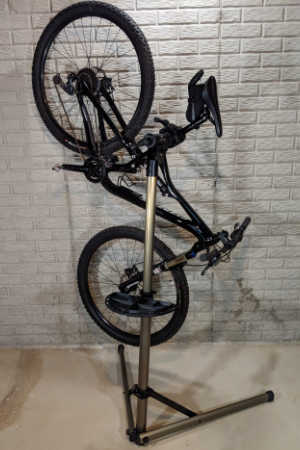
I own each of these tools and only recommend things I own and use.
- Bike Hand Bike Repair Stand . Nice mountain bikes don’t have a kick stand so keeping your MTB safe but conveniently stored is essential. I keep my bike on my stand whenever I’m not riding it. This makes it easy to lube the chain, inflate the tires and adjust the derailleur. Highly recommended – Bike Hand Bike Repair Stand (👈 Link to Amazon to see what thousands of others have said)
- A basic MTB toolbox for replacing a chain, adjusting brakes and dialing in the fit. Bike Hand has a 37-piece box that has most of the specialty bike tools to keep your MTB properly maintained. The Bike Hand brand is value packed for the avid rider. Check out the competitive prices with this link to Amazon 👉 Bike Hand 37 pcs Bike Repair Tool Kit
- Get a good air pressure gauge, if you get just a tiny bit serious about MTBing you’re going to start playing with tire pressure. A couple psi can make your tires sticking or not. Get a good gauge, I highly recommend the Topeak Smartgauge D2 , it’s accurate, flexible and easy to use. An Amazon best seller, here’s a link 👉 Topeak Smartgauge D2
- Carry a multitool with you on every ride. I’m serious, most of the time you can MacGyver something to get back to the trailhead if you have a multitool. I’ve got the Crank Brothers M19 , it’s worn, rubbed and abused – but it still works. Thousands sold on Amazon – check it out with this link 👉 Crank Brothers M19
How to Balance Your Suspension with a Full Suspension Mountain Bike
Balancing the amount of force that the front and rear suspensions on a full suspension mountain bike is crucial to getting the most out of said mountain bike. If one component is compressing slower or faster than the other then the comfort of the ride can be dramatically compromised. As can the overall effectiveness of the suspension system.
It is not essential that the front and rear suspensions have the exact same amount of travel although the closer they are the easier it will be to balance them. Balancing them involves adjusting the pressure inside of the chambers so that each shock, no matter the travel, bottoms out at the same time. A longer shock will need less pressure when paired with a shorter shock and vice versa.
Coil Shocks VS Air Shocks
There are two main kinds of suspension. Those which rely on springs to compress and those which rely on compressed air. The benefits of an air shock are that it is lightweight, easily tune-able, and naturally get stiffer near the point of bottoming out. The downsides are that they require more maintenance and are also not as responsive.
The reason why some rider chooses coil springs, even though they must be bought specific to the weight of the rider and are also heavier, is that they are extremely responsive. Additionally, coil springs don’t fade in stiffness when riding for long periods of time as some air coils will.
The Third Kind of Mountain Bike Suspension Setup (A Rigid Bike)

The third, and most uncommon, form of suspension on a mountain bike is… well… to not have one at all. On a rigid bike you will not find either a front or rear suspension system and rather just a solid frame comprising the entire mountain bike.
This kind of mountain bike setup is most widely used for fat tire bikes as with a fat tire bike it is absolutely necessary to be able to put a lot of power from the pedals into the trail. This is because of the friction accosted with a fat tire.
Rigid suspension systems on fat tire bikes are able to be implemented due to the natural suspension capabilities of having such a large tire. This larger tire works to absorb force and the low pressure you can ride at work to smooth out the ride as well.
Additionally, often time rider will upgrade their rigid style mountain bikes with increased cushion seats.
Some regular tire mountain bikes implement a rigid style suspension system although they are much less comfortable to ride and require a more experienced rider. These bikes can provide a great experience if you’re constantly going uphill and don’t plan to encounter any rough terrain.
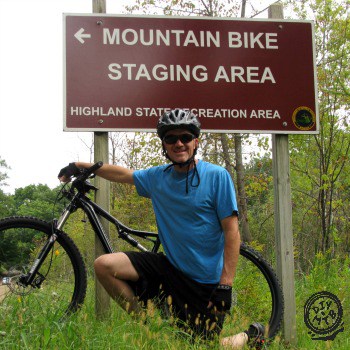
David Humphries is the creator of DIY Mountain Bike. For me a relaxing day involves riding my mountain bike to decompress after a long day. When not on my bike I can be found wrenching on it or making YouTube videos at 👉 DIY Mountain Bike Read more about David HERE .
Looking for more How To MTB articles? Click -> HERE
Bike A Ton is reader-supported. When you buy via the links on our site, we may earn an affiliate commission at no cost to you. Feel free to click away.

What is Travel on a Mountain Bike?
When someone says travel, the first thing that comes to mind is a vacation or perhaps a business trip. But if you’re looking for something different, why not take advantage of the freedom and adventure that comes with travel on a mountain bike?
Traveling on a mountain bike allows you to explore paths and trails that would otherwise be inaccessible. It’s an exhilarating experience, allowing you to see and experience places you might not have otherwise.
Why Many People Enjoy Mountain Biking
Mountain biking is also a great way to escape your busy and stressful everyday life. It’s an enjoyable form of exercise that can help you clear your head, refocus, and gain some perspective. Plus, it’s a great way to spend quality time with friends and family.
It’s important to note that mountain biking isn’t just about the destination but also the journey. You can take your time and enjoy nature at its finest, or challenge yourself and see how far you can go in a given amount of time. Either way, it’s an incredibly rewarding experience.
But did you know that travel can have a different meaning for anyone who enjoys mountain biking? That’s right! In this article, you will learn all about travel on a mountain bike.
What Is Travel On A Mountain Bike
Mountain biking travel is a term that indicates the distance of movement for any moving parts. Before, travel only referred to mountain bike suspension, but now it also incorporates dropper seat posts.
The travel distance is typically measured in millimeters (mm) and can range from 80mm on cross-country bikes to 200mm or more on downhill bikes.
Travel is a crucial aspect of mountain biking as it directly affects the bike’s performance and the rider’s comfort. More travel allows for greater absorption of shocks from bumps, rocks, and drops, making it ideal for rough terrains. However, bikes with more travel are typically heavier and less efficient on climbs or flat terrains.
With dropper post travel, the seat shifts from the typical riding position for pedaling to a lower level, enabling you to navigate technical descents more easily.
Differences Between Mountain Bike Travel Suspensions
There are three fundamental suspension systems that any Mountain Bike could have. Generally, a bike will feature either the classic “Hardtail” or modernized “Full Suspension” setup.
A hardtail mountain bike has a single suspension fork that is generally situated at the front wheel. It only has a “hard” rear frame, hence the name ‘hardtail.’ The suspension is usually limited in range, but it does offer impact absorption and increased stability for the rider.
On the other hand, a modernized “full suspension” has a suspension fork at the front and a rear suspension shock. With this setup, there is more travel for both the front and back of the bike. It offers improved impact absorption, increased control, and stability for the rider.
Here are the differences between hardtail and full suspension bikes:

When it comes to comfort, a full-suspension mountain bike is the superior choice. Not only will you be more comfortable while riding, but these bikes are designed for higher drops too! However, this can come at the expense of diminished power output on the path.
A hardtail mountain bike weighs less than a full suspension bike, making it the lighter option. This is because the frame of a full-suspension bike must be made stronger to carry the additional weight of the rear suspension.
Full suspension bikes cost more than hardtails due to their increased complexity and higher-quality components.
Maintenance
Maintaining a full suspension is more complicated than a hardtail, as the rear shock needs to be serviced or replaced at least once a year, depending on your riding conditions.
Front Suspension: The Forks

Each mountain bike fork comprises several components: a steerer tube that runs through the center of the crown and then branches off into two stanchions that fit inside their respective brace and slider. Lastly, these lead to two dropouts attached to the wheel for stability.
The conventional approach to upgrading front suspension is to up the travel of their stanchions. To put it plainly, this method amplifies the tightening of the front suspension. A shorter journey will be more reactive, allowing you to inject additional energy into your path. A longer suspension is an ideal choice for challenging paths and high lifts.
Common Travel Distances on the Front Suspension
It’s essential to remember that the size of the stanchion tubes matters greatly. As travel increases, the stanchion’s diameter must also expand to remain strong and stable.
Common Stanchion Tube Diameters
Rear suspension: the rear shocks.

Unlike the front suspension of a mountain bike powered by two compression chambers, its rear shock operates with only one. The shock is installed horizontally on the ground, with a slight diagonal slant, in contrast to the front suspension, which is set upright. Connecting to the bike’s frame through two eyelets makes your rear shock accurately sized and ready for use.
Rear Suspension Designs
If you’re a mountain bike enthusiast, you should be familiar with the five main rear suspension designs manufacturers use to make your rides even more enjoyable. These are the following:
1. Single Pivot
This is the most basic structure of all rear suspension designs and is generally cheaper to produce. The rear shock suspension is attached to the main frame simultaneously. The compression remains stable throughout the shock’s travel which amplifies stiffness when compressing to avoid bottoming out.
2. Linkage-Driven Single Pivot
With this design, a swingarm is still connected to one pivotal point. Despite this, the manufacturers have found a way to adjust the fixed compression curve as one move across their system.
3. Twin-Link / Virtual Pivot Point
This revolutionary design introduces a triangular structure connected to the mainframe by two swiveling connections. This design functions similarly to the Horst-Link but can frequently be produced at a lower cost due to its lack of patent protection.
4. Horst-Link / Four Bar
This design for a mountain bike features an axle that does not directly attach to the mainframe. By utilizing this system, you can eliminate the oscillation caused by regular pedaling. This also enables the manufacturer to adjust the compression arc, which is how much force needs to be applied throughout shock travel.
5. High Pivot
This is identical to the classic single pivot structure, except that the center of rotation is placed significantly higher on the frame for extra stability. Boasting an idler pulley that guides the chain path above its pivot point, this design significantly diminishes pedal bob for a more efficient cycling experience.
How To Find The Correct Eye-to-Eye Distance
The eye-to-eye distance measures the length of your shock, including any travel.
You’ll need to measure the distance between both of your shock’s eyelets to get a correct reading. Incorrect eye-to-eye lengths while using shocks can cause suspension inefficiency and adversely affect its function.
Balancing Suspension
To fully utilize a full-suspension mountain bike, it is important to understand its features and capabilities. Uneven compression rates between components can greatly affect ride comfort and suspension system performance.
The front and rear suspensions don’t have to have equal travel, but having them be similar makes it easier to balance them. To balance them, you need to adjust the pressure inside the chambers. This will ensure that each shock bottoms out at the same time, regardless of the travel. If you pair a longer shock with a shorter one, the longer one will require less pressure, and the shorter one will need more pressure.
Dropper Post: A Key Component In Mountain Bike Travel
What is a dropper post.
A dropper post, also known as an adjustable seat post, is a revolutionary piece of mountain bike equipment that allows riders to quickly and easily adjust the height of their saddle without needing to stop or dismount. This is done via a lever located on the handlebars, which controls a hydraulic or mechanical system within the post.
The primary advantage of a dropper post is that it provides the rider with the ability to adapt to varying terrain conditions on the fly. For instance, during steep descents, a lower saddle height can offer better control and stability. Conversely, on flat terrains or uphill climbs, a higher saddle position can facilitate more efficient pedaling.

The Connection Between Dropper Posts and Travel
So, how does a dropper post relate to travel on a mountain bike? Essentially, the dropper post adds an extra dimension to the bike’s adaptability, complementing the function of the suspension system.
Just as the suspension travel allows the bike to adapt to the terrain’s vertical undulations, the dropper post enables the rider to adjust their center of gravity in response to the trail’s demands. This combination enhances the bike’s overall performance and the rider’s control and comfort, making the journey more enjoyable and safe.
Main Types of Suspension
There are two main kinds of suspension. One relies on compressed air, while the other one relies on springs.
Suspensions using air shock are lightweight, easy to adjust, and stiffer as they approach the bottoming-out point. However, these options need more upkeep and are less reactive.
Coil springs, on the other hand, are more responsive, durable, and require less maintenance. The downside of using a coil spring is that they’re heavier than air shocks and are difficult to adjust.
No matter what type of suspension you use, make sure it fits your riding style and terrain. Properly set up suspension should help you tackle any trail confidently and safely.
Some bikes don’t have a suspension, and they’re called rigid bikes. They offer a direct connection between the wheel and the frame, which can be beneficial in certain situations. Fat tire bikes are a great example of rigid suspension bikes.
Overall, your suspension has the potential to make or break your mountain biking experience. It’s important to consider your terrain, riding style, and budget when selecting a suspension setup for your bike. Properly setting and tuning your suspension will help you to get the most out of every ride.
Remember that the right suspension will depend on your unique riding style and terrain. Test different types of suspension and find what works best. With the right suspension, you can take on any challenge with confidence and style.
About The Author
Mario Baker

Hey there! We’re Antonnette and Mario, a sister-and-brother tandem who love bikes and biking.
We and our team use our extensive knowledge about bicycles to help you have a great riding experience.
Read more...
Posts You Might Like
5 top hybrid bike handlebars: choose the right one for your ride, best bikepacking bags of 2024, best co2 inflators in 2024, 8 best mountain bike trainers in 2024, best bike brakes in 2024 (buying guide & reviews), 9 best bmx shoes in 2024 (with buying guide), 7 best bike helmet lights for 2024, best exercise bike for bad knees (our top 7 picks), best women’s cycling shoes (2024 buying guide & reviews), best bike baskets in 2024 (tried and tested), how fast can a mountain bike go speed limits & factors, is a bicycle considered a vehicle , bike vs bicycle: understanding the difference, gear cycle vs normal cycle: which one suits your riding style best, how many miles should you bike a day a comprehensive guide for every rider, when and how to safely enter a bike lane, mountain bike tire width: what every rider needs to know, top 5 bmx tricks for beginners to master, the complete guide to speed and agility training: unlock your athletic potential, how to choose a full suspension mountain bike: a complete guide for beginners.
Advertisement
Related Posts


What Does Mountain Bike Travel Mean?
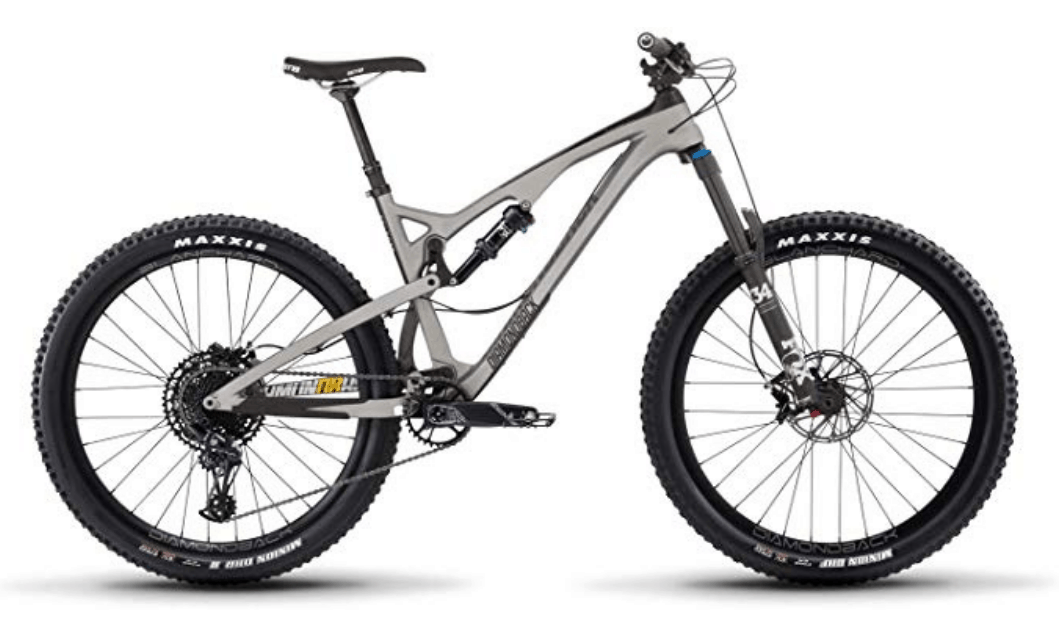
Perhaps when you hear the phrase mountain bike travel you picture to yourself packing a bike bag, getting on your bike, and traveling to some place that is new and exciting. But actually this is not what mountain bike travel really means at all, not even close.
Mountain bike travel refers to the suspensions of the bike and how much they can “travel” which is the distance that they can move up and down as you hit the bumps in your path. This travel distance tends to be different when it comes to the front suspension vs the rear suspension.
There are a lot of different things that can affect the travel of the suspensions on your mountain bike, some of which can be deliberately changed by a couple of settings that are found on most suspensions. There is also an ideal range that you should keep your travel at based on a variety of different factors that are unique to you.
What Is The Range Of Travel In A Mountain Bike?
The travel on a mountain bike is most often measured in millimeters and can range anywhere from 80mm to over 220mm. Some of this depends on what kind of mountain biking the suspension is made for, with the bikes that are made for the smoother trails naturally having less in terms of travel since you will not need as much.
Regular trail mountain bikes usually have suspensions in the 80-120mm range. However, for things like downhill racing you can easily find a number of options that are well over the 180mm range. Enduro mountain biking falls somewhere in between these two extremes and usually has around 140-160mm of travel to its suspensions.
How Much Travel Do You Want On Your Mountain Bike?
As you have likely already figured out from reading the previous section, the kind of mountain biking that you are doing will affect how much suspension that you want to have. As a general rule, the smoother the trails are that you will be riding on, the less suspension you will want to have. If you are going to be riding your mountain bike on the road to commute to or from work, you may not want it to have any suspension at all unless you know that there are potholes along your route that you will likely be hitting.
How much travel you should have with your suspensions can easily be summed up by two different factors: the terrain, and the style that you ride with. The terrain is obvious and can vary widely based on the trail you will be biking on, with a simple cross country trails being very different from a difficult downhill trail.
Your style, on the other hand, is completely dependent on you. If you charge down the trails, no matter how rough they are, and don’t care the slightest bit about picking what line might be the smoothest, then you will need to have more travel and therefore bigger suspensions compared to someone else who takes those trails at a more moderate pace and carefully picks their line of travel on the path.
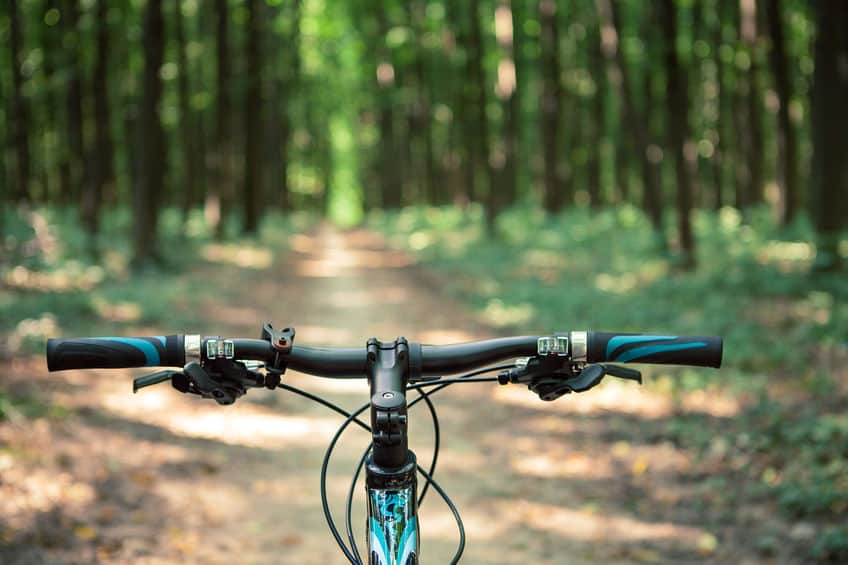
One of the things that you will want to take into consideration is that a bike suspension that offers more travel to it is not only going to be bigger in size, but it will also be heaver. This being the case, you do not really want to get a suspension for your mountain bike that has more travel than what you need it to have. This means that if the trails you are going to be mountain biking on are going to have a lot of uphill climbs you will want your suspension to be lighter and therefore have less travel to it so that it is easier to climb up those hills with your bike.
Not only does the amount of suspension affect the size and the weight, it also affects the length. This changes the position of the handlebars and tilts them further back when there is more suspension. While this is a great feature for downhill riding, if you are biking on the simpler cross country trails it is not only unnecessary but can also be uncomfortable for your hands and arms to be at that angle.
Another factor that you will want to consider when it comes to choosing how much travel that you want is to try to keep things close to even. What I mean by this is that you do not want to have a hardtail mountain bike that has no suspension in the back and a suspension that has 180mm travel or more in the front.
Why not? Well just imagine for a moment that you land at the end of a hard jump on this, now your front handlebars are going to be inches lower. If you are at a downhill angle at all this will be worse and will very likely throw you forward and possible over the handlebars – something that I don’t thing would end very well.
So to avoid this from possibly happening, you don’t want there to be too much of a difference in the travel in the front and the travel in the back on your mountain bike. This is why you can usually find more hardtail bikes that have only a small to moderate amount of travel in the front and, as you add more travel to the front, most mountain bikes have full suspensions.
Just in case you are confused, let me clarify: it is perfectly fine and even preferred to have a little more suspension in the front than in the back, just don’t go overboard with it. A 100mm suspension will travel about 4” so you likely do not want to have much more difference than that between the front and the back.
Another factor that you should consider when trying to decide the amount of suspension that you want is the size of your tires. Larger tires are known to be able to absorb some of the impact from the trail, therefore you should need a little less suspension when riding with them compared to what you would need if you are riding on a mountain bike with smaller tires.
As a general rule, start by looking at the range of the suspensions on the mountain bikes in the mountain biking discipline that most closely resembles your own biking style and the type of trails that you are riding on. If you are know you are an aggressive biker and that you will want to go down tougher trails, then you should go with suspensions that are at the higher end of the range you see.
If you are the easier rider who takes things slow, then you should be able to go with suspensions that are at the lower end of the range. However, if you have no idea where you fit when it comes to your riding style, try to hit the range somewhere in the middle. These ranges are around 80-120mm for simple trail biking; 140-160mm for Enduro biking; and over 180mm for downhill racing style mountain biking.
About The Different Suspensions
While it is a fairly obvious fact that the suspension on the front tire of a mountain bike is completely different from the suspension on the back tire of it, perhaps you don’t realize just how different these are. While there is mostly one common form of front suspension, there are around three different main designs for how the back suspension can be built.
There are a number of different technical terms that go along with telling about the different suspensions, so before I go any further let me explain what a few of them mean. A fork is what goes to both sides of your front tire and attaches this to the stem of your handlebars. While there are such things as rigid forks that have no suspension to them, for the purpose of this article I will not be talking about those and most of the time when someone simply refers to the fork they are taking about one with suspension.
A shock can refer to two things, usually however it refers to the rear suspension. The other thing that it can refer to is the compression chambers in the front fork which is the part that absorbs the impacts or “shocks” in the trail you are biking on.
A pivot is a connection that allows for rotation, like the hinges on a door frame could be called pivots since they allow the door to rotate open or closed. The linkage is the name for the piece of frame that is between the pivots.
You should already know by now what travel means, but another term that refers to the travel and is less common is stiction. Stiction is a shortened term for static friction and is what happens when the seals on a shock, that are there to keep the dust and dirt out of the shock, feel sticky and cause the suspension to move rather jerkily and not smoothly slide in and out. This mostly affects the travel when the suspension is new or when it has just been cleaned.
The last term that I will define is called the damping. The damping is a feature that can often be changed around and it is what affects the rate of movement and how much pressure it takes in order to affect the travel of the bike.
The front suspension has been around for the longest and is most commonly found in what is called a suspension fork. However, there is another option for the front suspension that is much less common but still proven to work. This second option is most often referred to as a “lefty” front suspension due to the fact that, instead of forking to be on both sides of the front wheel, it stays together and goes solely to the left side of the wheel and does not go on the right side of the wheel at all.
One of the reasons behind using a fork design is that it allows your front suspension to have two compression chambers. These chambers usually employ one of two methods in order to achieve the same effect. These two different methods involve either compressing a spring or coil or it instead features compressed air.
Since air does not have any weight, the kinds of suspensions that use compressed air tend to be lighter in weight. They are also easy to tune by simply adding air in or letting some out, and they naturally get stiffer the further down they go so that they are less likely to bottom out.
Coil spring suspension systems may be heavier, but they can often be much more responsive. They also do not gradually stay stiffer and stiffer over the course of a long, rough patch of trail like a compressed air suspension is capable of doing.
When it comes specifically to the suspension fork as a whole, however, this has a number of different parts, each of which has its own name. Starting at the wheel, the dropouts are the part that attach to both sides of the center of the wheel. Above that is the disc brake mount on one side for if you have a disc brake setup, while above that on both sides is the rim brake mounts if you have that kind of brake instead.
Just a little higher is the brace that acts as a bridge between the two sides of the fork and which also helps to stabilize it. The brace also connects the lower part of the sliders on either side, which is what the stanchions above the brace slide down into. These stanchions are connected at the top with what is called the crown, above which is the steerer tube which connects the fork to the rest of the frame.
When it comes to the rear suspensions, as mentioned, there are three basic categories that rear suspensions call fall into. The first one of these is called a single pivot design. This kind of rear suspension is the simplest option and therefore is often the cheapest and sometimes the lightest. Here the rear shock is connected to bar that goes vertically up from the pedals to the seat and forms a sheath around the bar.
Here there is the one pivot that lets it travel as well as a small piece that often connects it to the lower of the horizontal bars. A single pivot design is simple and lightweight, but this option also stands more chances of bottoming out.
The next option is called a linkage-driven single pivot. At first glance it looks very similar to a simple pivot design, however instead of forming a sheath around the bar for its pivot, this option simply goes around the bar somehow to the other side where the shock forms what looks to be its own vertical bar on the other side. For this reason it is sometimes referred to as a “faux bar” design.
After this is the horst-link suspension system which is also called a four-bar suspension sometimes, and which can also be put into the same category as twin-link pivot suspensions. These look far more complicated oftentimes than the above options. Basically the rear triangle that holds the back wheel is completely rigid.
In order to let it move it has two main points at which it pivots. One of these is where this triangle connects to the pedals, the other one is at the top of the triangle which is placed on either side of the vertical seat bar. At the top pivot point there is also a bar that goes horizontally in between the other two horizontal bars that a bike always has and which attaches to either one of them. This can sometimes make it look like a single pivot suspension, but in this case there is an actual bar and not a faux bar.
While these are the main three different categories, there are a number of variations of each with some specialized new designs for these almost always being tested out. However, most of the ones that you see will likely be one of the kinds that I mentioned.
No matter which one of these kinds of rear suspension you have on your mountain bike, most of them work in essentially the same way – after all, they are all trying to accomplish the same goal. The rear shock of a mountain bike is usually made of a single compression chamber instead of the two compression chambers that the front suspension usually uses.
This shock can be placed either vertically or horizontally depending on the design that is used for the suspension and this shock can be interchangeable as long as you get a shock that has the right size eyelet to fit into the spot correctly.
I'm a 42 year old married father of 3 that fell in love with mountain biking late in life. Mountain biking quickly became my go to fitness activity. I created this blog to help beginners to advanced riders with tips and strategies to improve your riding experience. More About Me... https://mountainbikinghq.com/mike-rausa
Recent Posts
What Are The Key Parts Of An Electric Assist Mountain Bike?
Mountain biking is a great hobby to have, but it is not for everyone. However, electric assist mountain bikes can make mountain biking an option for you even if you are not able to do mountain biking...
Top 5 Electric Mountain Bikes Under $1,000
Electric mountain bikes can help get you where you want to go on the trails, and they can be used for commuting in a pinch as well. However, some of these bikes can be so expensive as to be way out...
A Beginner's Guide to Mountain Biking
:max_bytes(150000):strip_icc():format(webp)/S.Dundas-10cbc6f42e3449bdaad307da059bdd72.jpg)
Getty Images / stockstudioX
Types of Mountain Bikes
How to size a mountain bike.
- Skills and Safety
- Clothing and Gear
- Planning a Mountain Bike Trip
Whether you just bought your first bike, have had a mountain bike collecting dust in the garage for years, or took a quick spin on your friend's ride and now want your own, there's one thing you can count on: there's a lot to learn about mountain biking. Even if you learned how to ride a bike at age three, you'll likely have to re-teach yourself a few things when you step over a mountain bike. And if you're a road biker, you'll have to unteach yourself a few things (pro tip: don't lean into the handlebars.)
Fortunately, while mountain biking may look extreme, it doesn't have to be. Most mountain bikers aren't doing XGames-style jumps on steep courses or flying down sharp rock faces—that's just what the pros like to show off. For plenty of mountain bikers, a leisurely ride along a dirt trail through the woods can be a great way to spend time in nature, get some fresh air, and help keep your heart and legs healthy and strong.
Here are the basics of what you need to know about mountain biking, but it only scratches the surface. Even pro mountain bikers are always learning new tricks and honing their skills to move faster and faster. But as long as you know a few basics before starting—and are always willing to keep learning—you'll be a capable mountain biker in no time.
Mountain bikes fall into a few different categories, which are generally accepted as being rather broad. Knowing what category a bike falls in will you give you an indication of what type of terrain and style of riding it's best suited to, but these aren't hard-and-fast rules, and brands will often market their bikes as being "crossovers" or "all-mountain."
Hardtail Bikes
Hardtail bikes do not have suspension in the back. That means they're not well suited to bumpy or rocky downhill terrain as there's nothing to absorb impact—you're more likely to get knocked around (and have a sore butt) afterward. The plus side to these bikes is they climb far more efficiently and are generally cheaper. Many beginner mountain bikers start with hardtails and progress to full-suspension bikes after getting a feel for the sport, though some experts prefer hardtails on smooth trails for their speed and light weight.
Trail Bikes
Trail bikes are the entry point to full-suspension mountain bikes. They can absorb impact and motion on both the front and back fork, which creates a smoother ride on bumpy trails—and allows you to ride over more without worrying about getting knocked around too much. The frame will generally sit the rider a bit more upright than a downhill or enduro bike, and your travel (the amount the fork can compress to absorb impact) is usually in the 120-150mm range. They have more "bounce" than a hardtail.
Enduro Bikes
Enduro bikes (sometimes called all-mountain bikes) are generally for slightly more advanced riders, though they're also a good bet for anyone who plans to ride boulder-laden or steeper trails. Travel is usually in the 150-180mm range, and the bikes tend to be burlier, stronger and built for bigger jumps and harder landings. A longer frame will put your body in a better position for downhill riding but, combined with more travel, can make climbing uphill more challenging.
Downhill Bikes
These bikes are made to excel at riding steep downhill sections at high speeds. This is the type of bike you'd bring to a bike park at a ski resort when you're riding a lift (or catching a ride) to the top. Expect travel in the 200mm+ range so you can absorb huge impacts and bumps and a frame designed to excel at quickly moving downhill. The flip side is they're difficult to climb on and can be heavy. Few people have a downhill as their only bike.
Sizing a bike isn't a perfect science, especially since features like handlebar width and seat height are adjustable. Bikes usually come in standard S, M, L, XL sizes, though not every brand uses the same measurements. Check the size charts and feel free to go to your local shop and ask the pros for sizing help—that's their job.
"It's good to start with a general height sizing chart, then take time to test a couple of sizes if you're in-between. Simple guidelines are that you should be able to stand over the top bar with flat feet comfortably. When pedaling, you shouldn't feel too crouched or stretched out," said Karen Jarchow, a Colorado-based professional mountain bike racer and youth bike coach at Vail Valley RIDE .
Karen Jarchow
Essential Mountain Bike Skills and Safety
When it comes to skills and safety, there are many things to know, but they fall under two main mantras: don't do anything unsafe, and be respectful on the trail.
The latter is pretty straightforward. Mountain bikers share trails with everyone from hikers to motorbikes to equestrians and, often, wildlife. In the U.S., the rule is that mountain bikers yield to everyone (though pedestrians will often step aside to let bikes pass.) When two bikes are on the same trail, the uphill rider has the right of way, and if you're coming up behind someone, a friendly "on your left" or "on your right" will usually be enough to alert the rider in front that you're there. If you're the rider with someone coming up behind you, it's courteous to pull over (whenever there's enough room to do it safely) and let them pass.
Mastering some essential skills isn't quite as easy, but it's necessary. Mountain biking can be a dangerous sport, but you're less likely to get injured if you start strong. You'll be able to progress more safely if you begin by learning a few key positions and tactics. "It all comes down to feeling comfortable, balanced, and confident on the bike," said Jarchow. "When I teach, I start with teaching how the athletic stance learned in other sports translates to the bike. The basics are getting comfortable standing on the pedals, bending elbows and knees, moving the hips, and keeping your chin up. Then, it's all about allowing the bike to move freely and being dynamic with your body."
Essentially, Jarchow recommends learning to stay lose and moving with, not against, the bike. Learning to treat your bike like an extension of your body to work with you in a team as you ride will help you feel more comfortable on trails. For some people, the biggest hurdle will be learning to let go of a little bit of control, but it'll pay when it comes to developing skills long-term. "Once I can get someone over that hurdle to a point where they trust their bike/body relationship," said Jarchow, "the other skills come more easily."
Pearl Izumi
Mountain Bike Clothing and Gear
While mountain bike clothing and gear is a booming industry, there's no reason you can't wear your regular gym clothes when you're just getting started. Moisture-wicking fabrics are best, and you won't want any loose material around your legs that could get stuck in the bike, but other than that, you don't need to spend money on new clothing (unless you want to!)
However, you do probably want to invest in some protective gear. A helmet is a non-negotiable, but new mountain bikers will probably want additional protective equipment, too. According to John Pepper, who manages the mountain bike product line for Pearl Izumi , you should expect a few bruises at first. "Don't skip protection. You'll likely have a fall or two as you're starting out, and you'll want to make sure you have a good set of knee or elbow pads." Pepper—along with any mountain biker who's made the mistake of not wearing one—also recommends a padded short , called a chamois. "A good liner short with a chamois can make a big difference in comfort during a mountain bike ride," said Pepper. "You don't want an ill-fitting piece of equipment to take away from an otherwise great experience on your bike." And getting bruises and sores from unpadded shorts can take away from the experience.
As for gear, you'll want bike gloves, sunglasses , and probably tall socks if you're riding through areas with a lot of brush. Mountain bike-specific shoes can give you a little more traction on your pedals, but wear your favorite grippy outdoor shoe if you don't have them. You can also put a water bottle holder on your bike, so you don't need to carry a hydration pack for short rides, and strapping tire-changing supplies and a bike multi-tool to your frame can be convenient, too.
Tips for Planning a Mountain Bike Trip
Expect to find mountain biking challenging at first, even if you're in great shape otherwise. It's an intense cardio workout and feels impossibly hard at first, especially if you're still learning how to shift and adjust your bike on steep and rocky terrain. Because it can quickly tire your muscles, consider making your first mountain-biking trip more of a general mountain trip than a bike-specific trip . That way, you can spend the mornings biking and give your body time to recover while sightseeing or relaxing in the afternoons. Planning a trip where you mountain bike all day for days on end is an excellent way for beginners to pull a muscle, get hurt, or tire themselves out too quickly.
If you want to try downhill mountain biking, consider a summer trip to a ski resort with a mountain bike park. Good options include Northstar California Resort or Mammoth Mountain (both in California), Colorado 's Keystone or Breckenridg e Resorts, Sugar Mountain in North Carolina, or Killington Resort in Vermont. Those resorts all have plenty of nearby activities when you need a break from the bike.
Mammoth Outdoor Office
If you want to do more cross-country and trail riding—and don't mind some climbing—then you don't need to limit yourself to ski resorts. There's mountain biking in every state, so the easiest way to find where to go is to search for "best mountain biking in your location or state." Make sure to use an app like Strava, AllTrails, or TrailForks to check the route, elevation gain, length, and difficulty rating before starting any new trail.
Remember that there's no standard system for rating trails. Unless you're at a resort, the difficulty level is just the average rating from fellow mountain bikers. Always start with an easy (or green) trail when you're riding in a new area. An exceptionally rocky path is difficult for some people, while others have no problems with rocks but find long uphill climbs very challenging. The more you ride, the more you'll be able to better evaluate trail ratings.
15 Outdoor Skills to Master This Year, With Expert Tips and Tricks
Your Complete Guide to Bikepacking
The 10 Best Places to Buy Bikes
Smith Rock State Park: The Complete Guide
The Best Padded Bike Shorts of 2024, Tested and Reviewed
The 9 Best Mountain Bike Trails in the US
The 9 Best Beach Cruiser Bikes of 2024
16 Best Things to Do in Colorado in Summer
The Different Types of Adventure Travel
The Best Small Town in Every State
Hanging Rock State Park: The Complete Guide
7 Great Destinations for Winter Fat Biking
How to Plan the Ultimate Ski Vacation to Whistler, British Columbia
The 15 Best Destinations in the U.S. to Explore by Bike
Glacier National Park: The Complete Guide
The Best Staycation in Every State
- MAGAZINE OFFERS
- BIKE INSURANCE
- Best Products
- Maintenance
- Accessories
- Long-Term Reviews
- BikeRadar Podcast
- First Look Friday
- Bike of the Week
- Tech Features
- Routes and Rides
- Bike Galleries
- BikeRadar Bargains
- Buyer's Guides
- Fitness & Training
- Sizing & Fit
- Mountain Biking UK
- Cycling Plus
How much suspension travel do I need on my mountain bike?
From cross-country to downhill, we take you through how much travel you can expect on the major types of mountain bike
Andy Lloyd / Our Media
Mountain bikes feature different amounts of suspension travel depending on the type of riding they're designed for.
Suspension travel describes the amount of movement a suspension fork or rear shock has. It is usually a measurement of how far the wheel axle moves in a vertical or near-vertical plane as the suspension compresses.
Depending on the discipline of riding the bike is designed for, the suspension travel can vary from 80 to 200mm. While more travel may seem better, helping you soak up lumps and bumps, it can be a hindrance if your riding includes lots of climbing or you benefit from a light, responsive bike.
This means deciding on the right amount of travel for your needs can be difficult, but there are a few factors to keep in mind, including your riding style and the type of trails and terrain you'll be tackling.
Bike manufacturers design their mountain bikes around different travel lengths, tailored to specific terrains or riding disciplines, and categorise the bikes accordingly. As a result, looking at the different categories of mountain bikes, their intended application and travel length is a handy way to determine how much travel you need and what bike you should get.
In this guide, we’ll explain the different mountain bike categories and how much suspension travel they typically have.
Cross-country mountain bikes

The best cross-country mountain bikes are designed to compete in high-level, fast races, where lightness and pedalling efficiency are often the keys to success.
Typically, cross-country bikes have featured 80 to 100mm of travel. Because cross-country race courses have become more extreme and technical, it is now common to see bikes designed around 120mm travel front and rear, such as Scott’s Spark RC .
Using less suspension travel than other mountain bikes means cross-country bikes can be built with a lighter frame construction because less reinforcement is needed to deal with the lower frame articulation. This helps riders race up the kinds of inclines that characterise XC races .
The short-travel forks used on cross-country bikes also help to keep weight down because they utilise a lighter chassis and narrower stanchions, usually 30 to 32mm in diameter.
Stanchions are the part of the fork connected to the crown and remain rigid to the bike while the lowers move up and down over them.
The trade-off for this weight saving comes in the form of fork flex, which impacts the directness of steering inputs and the overall ability of the fork to perform in gnarlier terrain as friction levels build on the seals.
A short-travel fork will also run out of travel quicker compared to one with more travel. Although setup and damper performance will dictate a lot of factors in how proficiently it absorbs bumps, less travel means it won't absorb bigger bumps as well as a long-travel fork.
Hardtail mountain bikes are also well-represented in cross-country, because rigid frames allow for the highest pedalling efficiency. However, the traction and descending ability of full-suspension bikes make them desirable to many riders.
Downcountry mountain bikes

Downcountry bikes aim to balance a cross-country bike's efficiency with a trail bike's downhill capability.
‘Downcountry’ is a relatively new mountain bike discipline and isn’t that well defined as a result. But in terms of suspension, these bikes range from beefed up cross-country at 110mm of travel, to lightweight trail with around 130mm front and rear travel.
Having slightly more travel than an outright cross-country bike means downcountry bikes are more capable on descents. However, with shorter travel than trail bikes, they still offer greater pedalling efficiency than burlier bikes.
Downcountry bike frames can be made lighter than trail bikes because the demand on the frame is less. This means they require less material in their construction because they don’t require the same amount of strength as a trail or enduro bike needs.
Downcountry bikes usually feature stronger, stiffer forks, with thicker stanchions, usually 34mm in diameter. This gives higher levels of rigidity to the fork, making steering inputs more direct, although concessions are still made to weight savings.
Trail mountain bikes
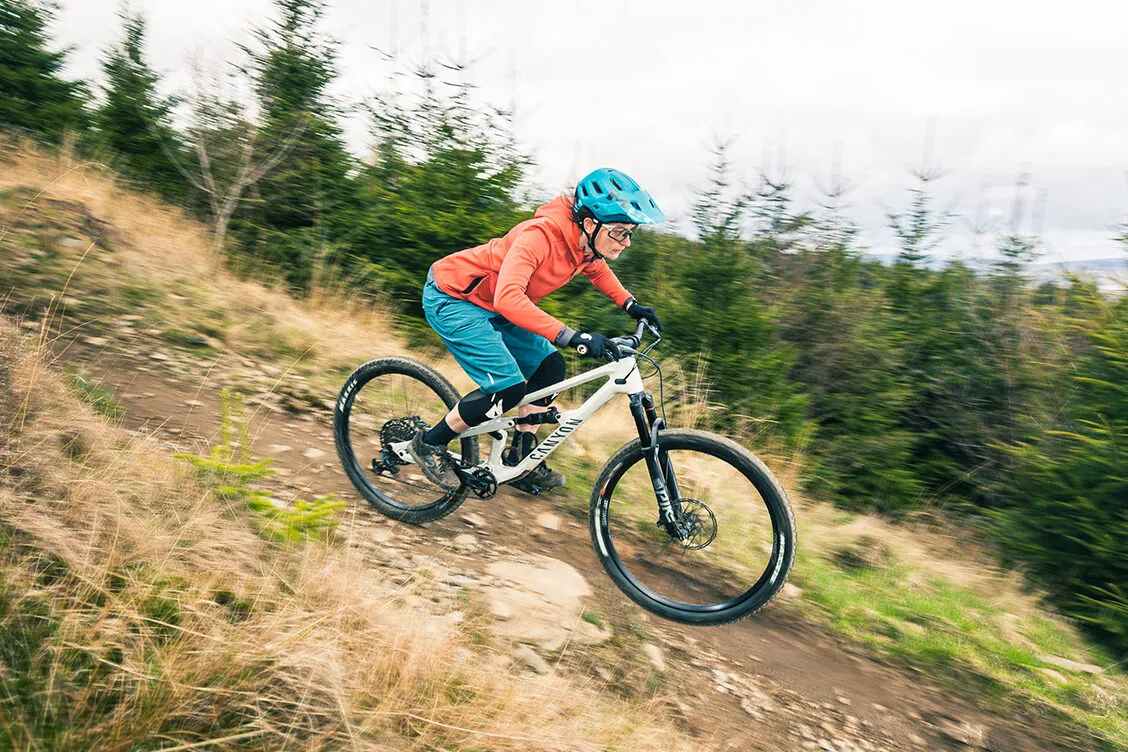
Trail bikes are one of the most popular types of mountain bike. They are designed to straddle the line between enduro bikes and cross-country bikes, providing a ride that’s fun but capable.
Confident on descents and fairly capable on climbs, trail bikes typically have between 120 and 160mm of suspension travel.
Trail bikes at the longer end of the suspension-travel spectrum cross the boundary into all-mountain. Typically, these bikes will feature beefier frame construction to deal with the added suspension travel.
The optimum amount of travel depends on what terrain or trails you like to ride, and where you’d like to progress with your riding. 140mm is ideal for even the toughest trail centres, with more travel being required for gnarlier ambitions.
Forks with mid-sized stanchions, either 34mm, 35mm or 36mm in diameter, are common on trail bikes. These shift the balance away from lightness toward rigid stability for better handling while descending. Less flexibility in the fork will mean more direct steering input, making the bike feel more planted through the rough stuff.
Enduro mountain bikes
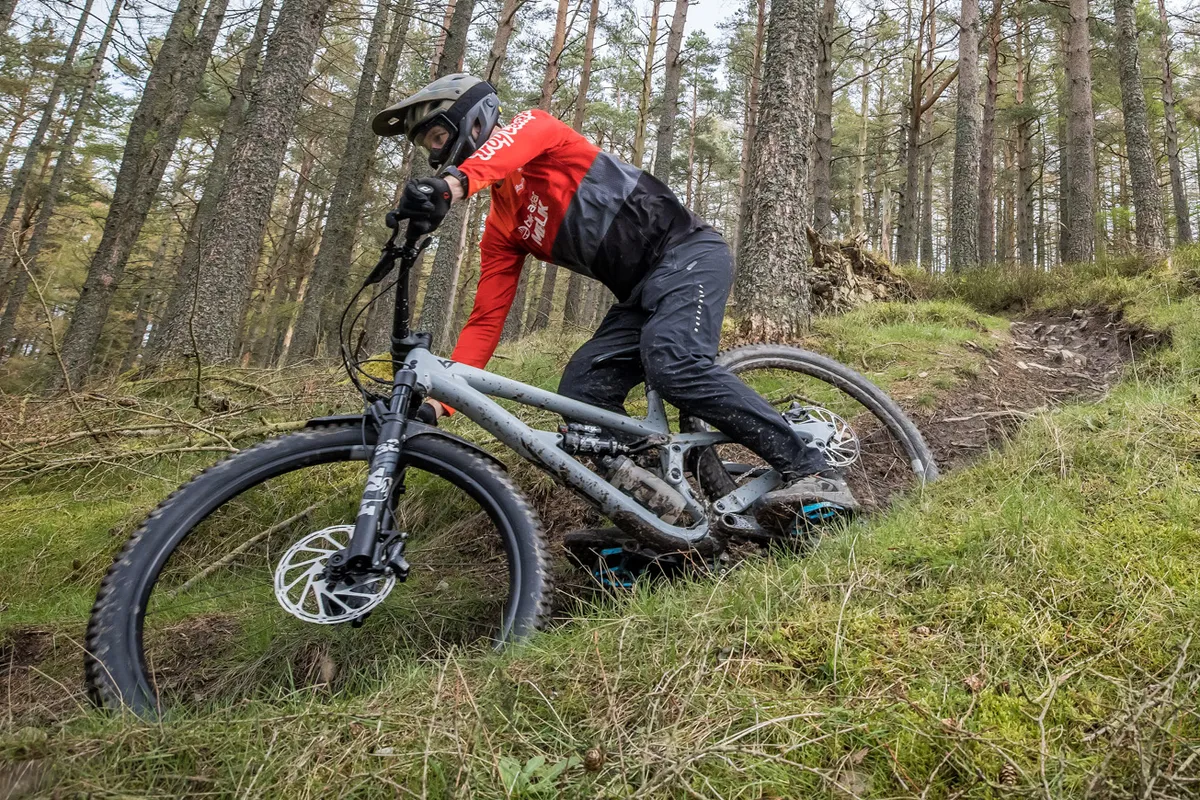
Enduro bikes are designed to meet the demands of enduro racing , which consists of multiple downhill stages that riders have to reach within a set time limit. As a result, enduro bikes have to perform well on technical descents while providing a decent pedalling platform to get you to the top of the trail in good time.
Travel for enduro bikes starts at 150mm and ranges up to 180mm. There is a 190mm-travel version of RockShox’s enduro-focused ZEB fork, but you’re more likely to see this attached to a freeride or bike park bike.
Enduro bikes require a burly frame construction in order to cope with the demands of downhill trails.
Head tubes have to be stronger to deal with the extra force coming from the long-travel fork, while the rear linkage has to be able to support the extra articulation.
This added frame construction makes the frame heavier, impacting efficiency when going uphill, but the pay-off is worth it when coming back down.
Forks within this travel range prioritise rigidity over weight savings, with thicker stanchions of 36mm to 38mm, providing direct steering inputs and a solid feel as you ride over gnarly terrain.
Downhill mountain bikes
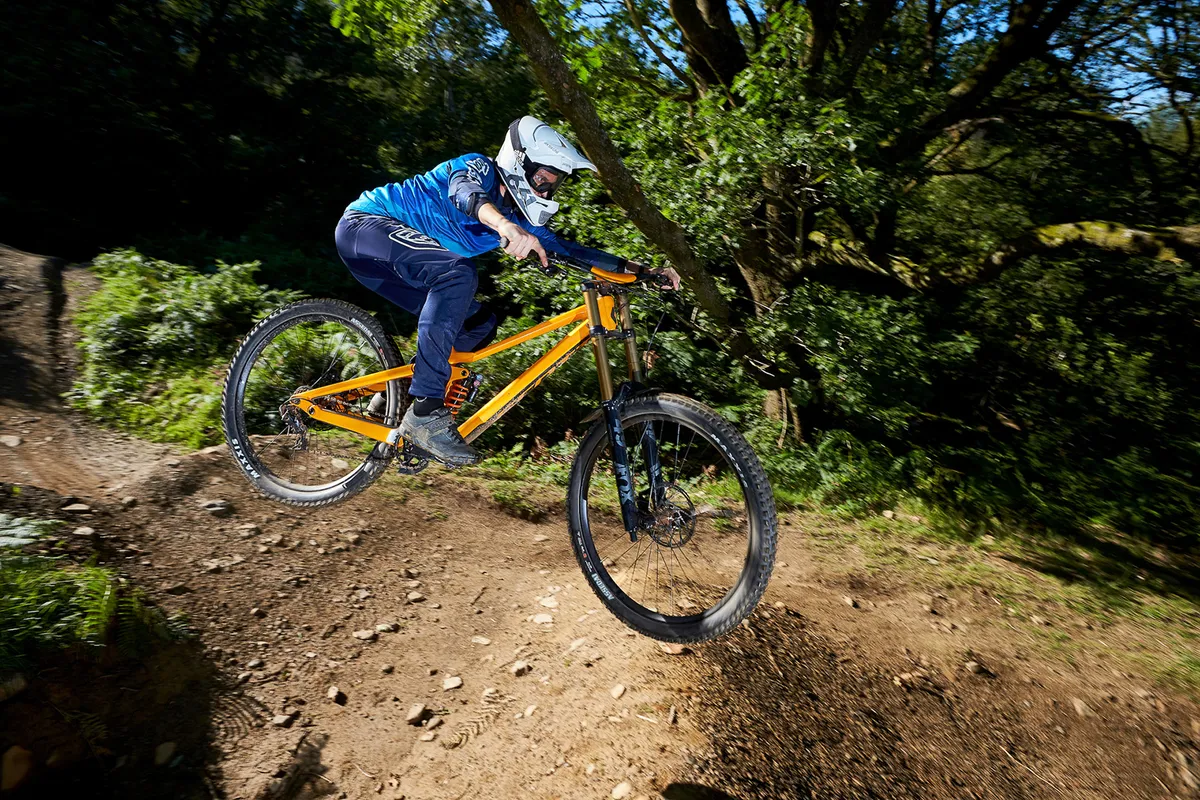
Downhill bikes are designed for, you guessed it, riding downhill. The discipline doesn’t require the bike to be pedalled on uphill or even flat terrain, enabling designers to focus solely on providing the best platform for descending steep and technical trails.
These bikes feature some of the longest suspension travel, ranging from 180 to 200mm, helping to protect riders from large, repeated impacts.
Frames have to be built to the highest strength levels to cope with the impacts you experience on downhill trails. Although downhill frames are heavier than those intended for other disciplines, it's less important to have light frames because you’re not pedalling them uphill.
Downhill forks feature the thickest stanchion, ranging from 35 to 40mm in diameter, because they deal with the most extreme terrain and require the greatest rigidity.
Weight isn’t a big issue for downhill bikes, so the added heft is worth the trade-off for the performance gains.
The forks on downhill bikes have a dual-crown design, meaning the fork mounts above and below the head tube, as opposed to single-crown forks, which mount only from below. This adds more torsional stiffness to the fork, helping to keep steering inputs direct through the toughest terrain and providing strength for big impacts.
Electric mountain bikes
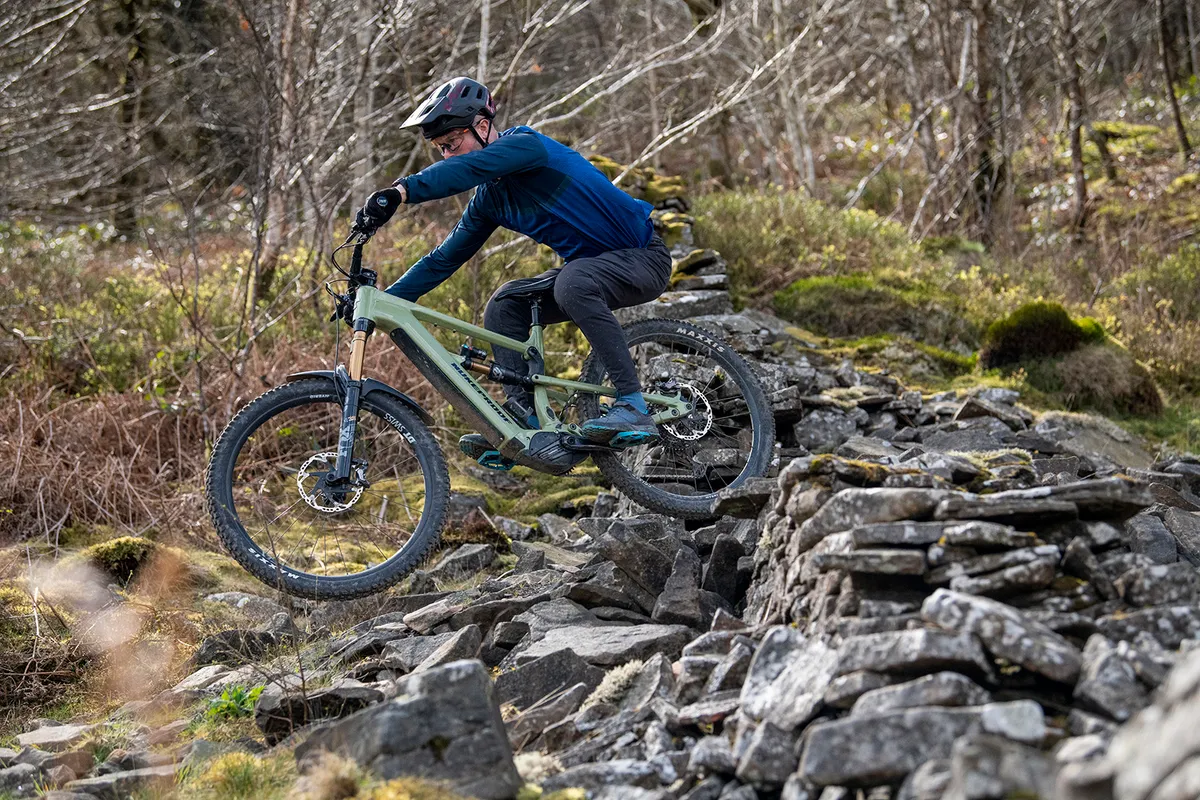
Electric mountain bikes are heavy, even compared to downhill bikes. The added weight a battery and motor bring means frames as well as components have to be engineered to cope with the extra weight – and contribute even more weight to the bike in the process.
Electric bikes can be categorised by the other disciplines featured in this article and will tend to feature the travel of that discipline.
The best electric mountain bikes will feature e-MTB specific forks and shocks, some with thicker stanchions for rigidity, and custom tunes that are suited to the heavier weight of the bike.
Because you’ll have a motor, there won’t be a trade-off in having a bike with more travel (and therefore weight), with the bike taking up the burden on the hills.
What about hardtail mountain bikes?
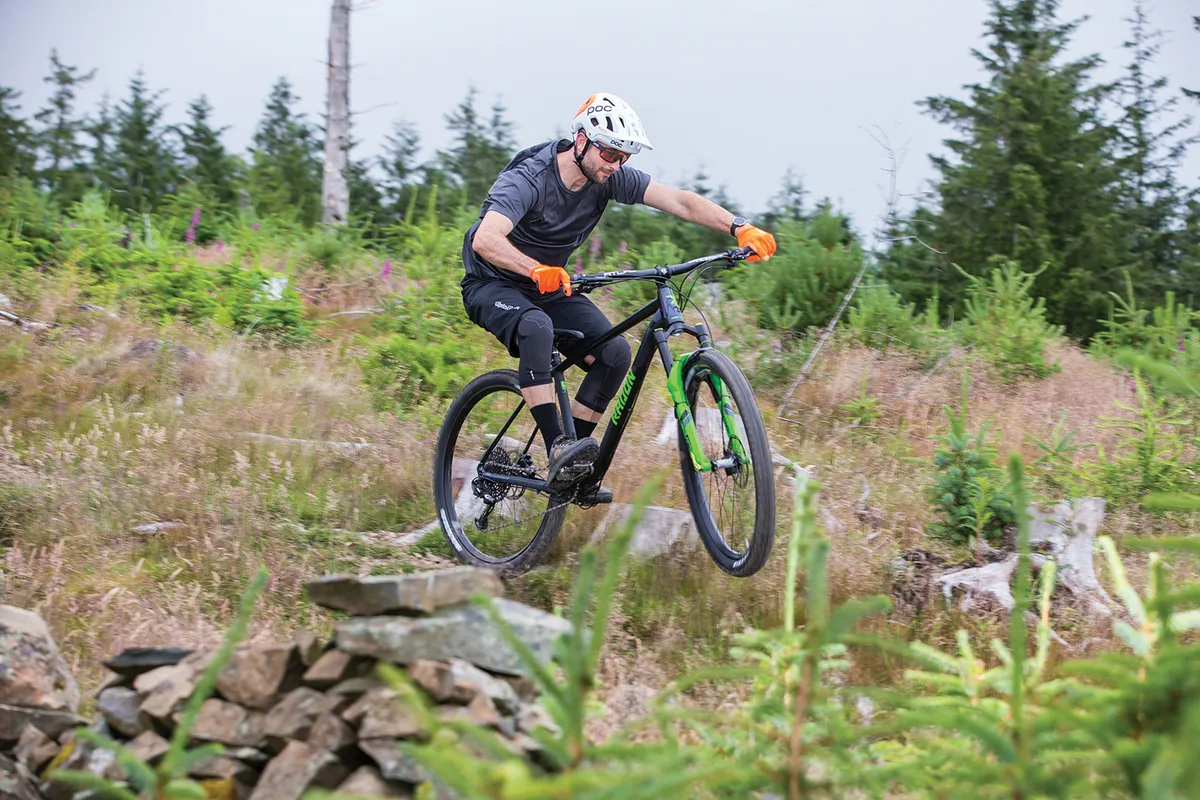
Hardtail mountain bikes have a suspension fork and a rigid rear end. They can be seen in a variety of disciplines, though are mainly represented in the cross-country and trail disciplines. They are also popular when it comes to budget mountain bikes because the simplicity of their design and less suspension means less cost.
As with other types of mountain bikes, fork travel is usually dependent on discipline. Cross-country hardtails typically have 100mm of travel, but more aggressive hardtails can have suspension travel of up to 150mm.
Some manufacturers will design frames with flex points in the rear triangle, allowing for vertical compliance in the frame. This improves comfort when sat in the saddle, and to a smaller extent rear-wheel traction while climbing.
Share this article

Digital Writer

- Terms & Conditions
- Subscribe to our magazines
- Manage preferences

Biketoworkday is supported by its audience. When you buy through our links, we may earn an affiliate commission. Learn more
What is Travel on a Mountain Bike? – A Beginner’s Guide
Written by Gary Johnson / Fact checked by Henry Speciale
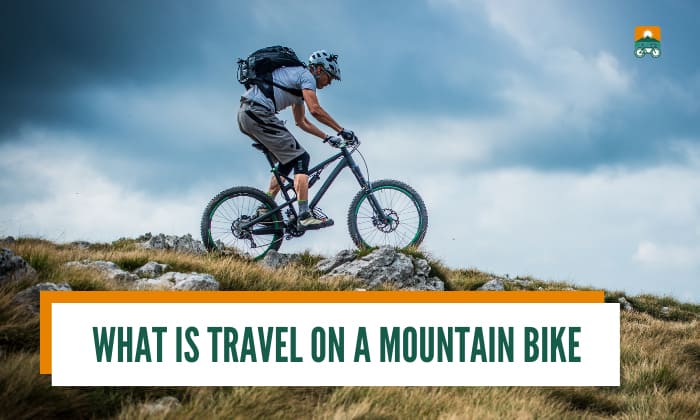
Traveling on a mountain bike takes you off the beaten track and offers several physical challenges. You might have to ride up steep hills and navigate rocky trails that require precise bike handling skills to maintain control.
In this case, mountain bike travel is here to play a role. It’s not about your adventure but a tool to enhance your riding experience.
So what is travel on a mountain bike? Read on to learn about mountain bike travel and explore its mechanism of action. Moreover, some useful tips are also provided to help you to get the most out of your mountain biking adventures.
Table of Contents
Travel on a Mountain Bike: What’s It?
Types of travel, short travel vs long travel mtb, mid travel vs long travel, how much mtb suspension travel do i need, how to choose a suitable travel for mtb, frequently asked questions.
Travel on a mountain bike refers to the amount of suspension travel the bike’s front and rear can provide. Suspension travel is the distance the suspension can compress and rebound, measured in millimeters (mm).
Mountain bikes are designed to handle rough terrain and uneven surfaces, so good suspension travel can significantly absorb the impact of bumps and shocks, eventually providing a smoother and more comfortable ride.
Short Travel

- Front suspension forks with travel of up to 120mm, and no rear suspension.
- Ideal for cross-country riding.
Mid Travel:

- Front suspension forks with travel of 120mm to 140mm
- Rear suspension with travel of 120mm to 140mm.
- Best for trail riding.
Long Travel:
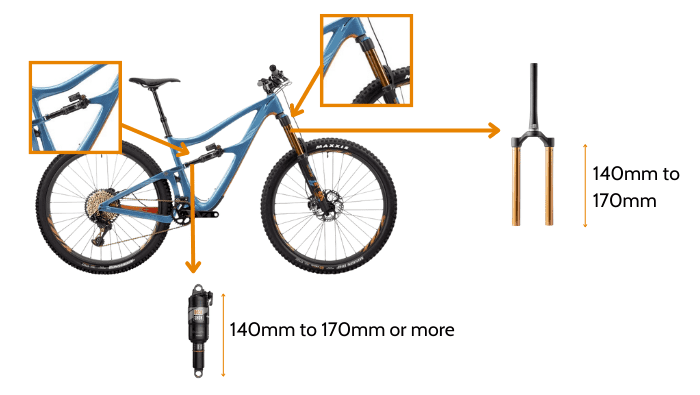
- Front suspension forks with travel of 140mm to 170mm
- Rear suspension with travel of 140mm to 170mm or more.
- Ideal for enduro racing and downhill riding.

By having more suspension travel, long travel mountain bikes are best fit for aggressive, technical riding by providing more cushion and shock absorption on rough terrain, allowing riders to maintain control and momentum in challenging conditions.
However, they are not the ideal type of bike for all riders and terrain types. They tend to be heavier and less efficient at pedaling and climbing. It might be a waste if you purchase a long travel bike for smoother terrain or long endurance rides only.
So, you should choose short travel mountain bikes instead, which are also known as XC or short travel trail bikes. They are the best option for beginners and those who prioritize agility and don’t want to lose too much energy.
When you find it hard to make the decision, it’s recommended to choose a mid travel mountain bike. This special bike is a combination of the long travel bike and the short travel one, which eventually make them a good all-around choice for most riders.
It can handle both technical terrain and steep descents, but is also efficient enough for climbing.
1. Front suspension
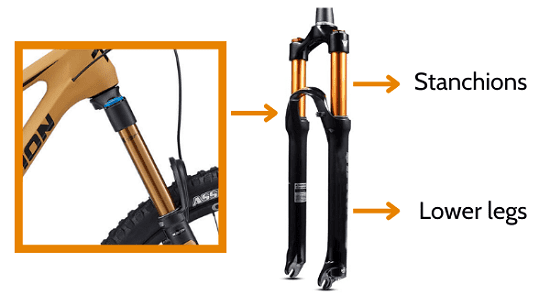
Front suspension, also known as a suspension fork, is located at the front of the bike.
The suspension fork typically consists of two main components: the stanchions and the lower legs.
- Stanchions: the upper part of the fork, which slides up and down inside the lower legs.
- Lower legs: contain the suspension mechanism, typically one or more air springs or coil springs, and damping mechanisms such as hydraulic or mechanical systems.
They also come in different types of travel, depending on the type of mountain bike, such as 80mm – 120mm (Cross-country MTB) and up to 200mm with downhill bikes.
2. Rear suspension

There are several different designs used in mountain bike suspension systems:
- Single pivot: Uses one pivot point between the swingarm and the mainframe. It is simple and easy to maintain, but can be less efficient and more prone to pedal bob than other types of pivots.
- Horst link: Together with a pivot point between the swingarm and the mainframe, a horst link suspension system also uses a pivot point above and somewhat forward of the rear axle.
Despite having better anti-squat properties and increased pedaling efficiency, it can be more complex and challenging to maintain than a single pivot.
- DW-Link: Makes use of two pivot points that are aligned along the bike’s chainstay and seatstay, and are connected by a linkage system. It provides excellent traction and anti-squat characteristics, but can be more complex and difficult to tune than others.
- Flex pivot: Has a flexible rear triangle that can bend and twist to absorb shocks and vibrations. It is simple and lightweight, but may not provide as much shock absorption as other types of pivots.
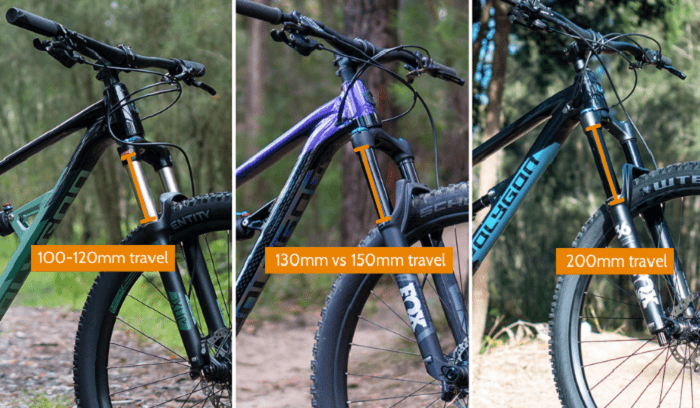
The amount of front travel on a mountain bike you need will depend on several factors, including your riding style, the terrain you’ll be riding on, and your personal preferences.
1. 100-120mm travel
If you primarily ride on smooth or moderately rough terrain, such as dirt roads, trails, and light singletrack, the travel you need on a MTB should only range from 100mm to 120mm. This will provide enough shock absorption to improve your comfort and control without adding unnecessary weight or complexity to your bike.
2. 130mm vs 150mm travel
A 130mm travel mountain bike fork is typically used for cross-country or light trail riding with moderate technical features. Meanwhile a 150mm travel fork is more commonly used for trail and enduro riding with more intense terrain.
Some riders may prefer a 130mm fork for more technical riding, while others may find a 150mm fork to be too much for their needs.
3. 200mm travel
200mm is the most suitable fork travel you should use for downhill riding. It offers the maximum amount of shock absorption and maintenance, allowing you to tackle the most challenging terrain with confidence and agility.
A 150mm travel fork is enough for downhill riding depending on the specific trail and the rider’s skill level and preferences.
However, purchasing a bike with a longer travel fork for long-term usage is the best option since it will have better performance and provide smoother rides.
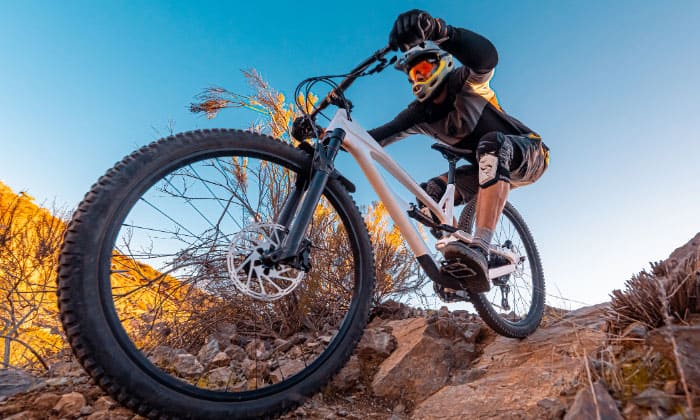
The type of riding you plan to do will have a big impact on the amount of travel you need. If you are interested in having strong feelings with steep descents and drops, a longer travel fork is what you need.
If you prefer smooth rides like cross-country trails, a shorter travel fork may be sufficient, you may not need as much travel as someone who rides tricky terrain.
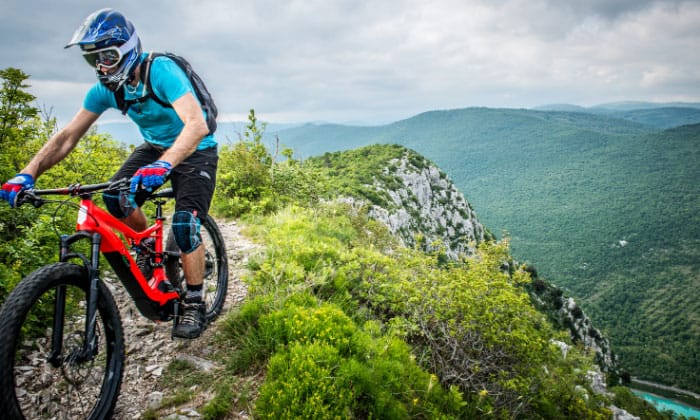
Tips to balance suspension with a full suspension mountain bike
The amount of travel in the front and rear suspension should be balanced to ensure optimal shock absorption and control.
You should begin by following this step:
- Read and follow the manufacturer’s guidelines for setting the sag (the amount of compression in the suspension when you sit on the bike)
- Adjust the air pressure or preload as needed to achieve the desired sag.
- Adjust rebound and compression damping to help balance the suspension and provide optimal shock absorption.
If you’re having difficulty balancing the suspension on your bike, consider getting professional help from experts.
What is a good amount of travel for a mountain bike?
The amount of suspension travel varies depending on the type of riding the bike is intended for. Bikes with less suspension travel have increased pedaling efficiency, lighter weight and lower maintenance requirements.
Otherwise, bikes with more suspension travel provide increased traction and better performance in extreme terrain at high speeds. The more suspension travel the bike has, the more it can absorb impacts and maintain contact with the ground, which can reduce the risk of crashes and improve the rider’s control.
H ardtail and full suspension
Hardtail suspension and full suspension are two different types of mountain bike suspensions. What is the best choice for your ride?
The answer is: It depends. So here are some aspects to consider before making a decision:
- Design: A full suspension bike has both a suspension fork in the front and a rear suspension system, but a hardtail suspension only features a suspension fork in the front and a rigid frame on the rear of the bike.
- Comfort: Full suspension bikes provide more comfort and better shock absorption than hardtail ones since they have more suspension systems.
- Efficiency: Hardtail suspensions are more efficient in pedaling and climbing due to their rigid rear frame that transfers power directly to the pedals. Full suspension bikes, however, require less effort when riding on uneven trails.
What is travel on a mountain bike? What is the difference between them and how much travel do you need for a MTB? These are our answers and some tips to help you address any hitch about this topic.
We hope that by providing this helpful information, you will know what travel means on a bike and make a better decision for your next trip.

“I ride my bike to work for years, but is that enough? Our carelessness towards our surroundings has taken a toll on the environment. And now, everyone is responsible for changes; even the most minor contribution is counted. With this hope and spirit, I started with my partner to establish Biketoworkday to help more individuals commute to their work sites on their bikes.”

Mountain Bike Suspension Explained: How to Set It Up Right?
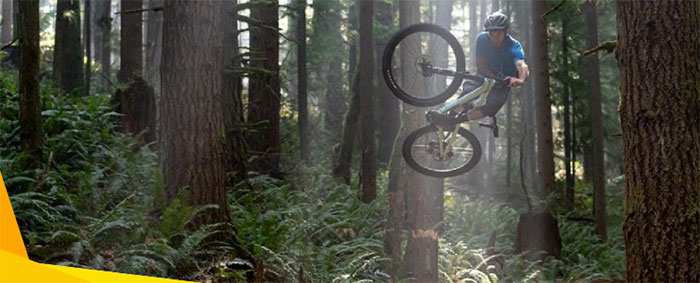
Mountain bike suspension is one of those features that we sometimes take for granted. It can be easy to forget how much of a difference suspension makes, yet it is what separates good mountain bikes from bad mountain bikes.
But how does it really work? Most people don’t really know the mechanics behind it. It can be a tricky subject for a beginner.
In this guide, we’re going to take you into the world of mountain bike suspension.
What Does Suspension Do?
How does suspension work, how to choose suspension.
You probably understand that suspension has to do with some kind of compression. We see suspension systems on far more than mountain bikes alone. You can find these systems on everyday vehicles, motorcycles, trucks, buses, and even airplanes.
Suspension compresses under heavy load, dampening the impact from a landing, or the nature of rough terrain. Mountain bike suspension creates a smoother ride by compressing and rebounding.
A mountain bike with front fork suspension only is called a hardtail. A mountain bike with both front fork and rear shock suspension is called a full-suspension, or dual suspension.
Hardtails are generally lighter, more affordable , and easier to maintain than full suspension mountain bikes, though they are not equipped to handle all kinds of mountain bike terrain. Instead, hardtails are designed for smooth single-track or double-track, as well as paved or fire roads. They are great for hill climbing and variable-terrain rides such as those with mixed paved-dirt sections.
Full suspension mountain bikes are significantly heavier, more expensive, and more difficult to maintain than hardtails. Although there’s no denying — they are much more capable .
These bikes can handle rough trails and bounce over roots, rocks, and jumps without a problem. Full suspension mountain bikes are designed for the gnarliest trails and steepest downhills .
Their front and rear suspension systems make the ride much more comfortable overall. So, these bikes are best for harder rides on rough trails, beginner mountain bikers, and high-speed descents.
It is interesting to note that most mountain bike manufacturers don’t make their own suspension systems. Instead, they enlist the help of suspension manufacturers such as Fox, RockShox, SR Suntour, and DT Swiss.
Many mountain bikes come in 3 to 5 different models which include different specs and components. Differing suspension systems are part of these differences.
Suspension comes into action when your tire makes contact with an object or the ground, with a force strong enough to force it to compress towards the bike.
On a bike without suspension, this force would be transmitted straight through the tire, up into the wheel, through the fork, and into the frame and handlebars where you would feel the impact directly through your hands.
What changes with suspension is that this force isn’t transmitted to your hands. It rather goes into the suspension system itself through forced compression.
After contacting an object such as a root jutting out from the trail, the front suspension compresses, which means that the stanchions move through the sliders, the force is distributed through the suspension, and then the suspension rebounds to its original position.
Rear suspension systems, also known as rear shocks, work in the same way as front fork suspension systems, but with different parts.
Front Suspension

Front suspension on a mountain bike will always go through the fork, which is the separate piece of the bike that attaches your frame to the front wheel. The fork is what wraps around the front wheel, it houses the brakes, as well as the suspension system.
Sticking out the top of the fork is the steerer tube which is where the fork attaches to the frame, and below that is the crown of the fork, which is where the two fork legs splay out around the wheel. Next are the stanchion legs or upper legs, which slide down into the fork’s lower legs, conveniently called the slider.
This is the heart of the front fork suspension system, the parts that actually compress and slide against each other under load.
If you look closely at the top of the slider, you will see the seals, garter springs, and bushings inside the sliders.
At the bottom of the lower legs are the dropouts , that hold the axle of the wheel which is most commonly a thru-axle system designed for disc brakes. This is the part of the fork that actually attaches to the front wheel , holding it in place.
There are also brake mounts on this bottom part of the fork. Larger forks (with heftier suspension systems) can handle larger brake rotors. Smaller cross-country fork will pair with smaller disc brakes rotors. Larger downhill fork can take on big disc brakes, such as those with 200mm rotors.
Related: Jenson USA’s Suspension Service
Suspension systems are designed to compress, and that’s why the front fork suspension involves the upper and lower legs, or the stanchion legs and sliders.
When fully compressed, the stanchions will be able to move a certain distance into the sliders – this distance is called travel.
More movement means more travel, and more travel means greater cushioning under compression and impact. Thus, basic suspension systems, such as those on hybrids and kids’ bikes have little travel. All-mountain and trail bikes have the most travel.
Travel Distance
- 30-50mm – Kids’ bikes
- 60-80mm – 24″ kids’ bikes, hybrids
- 100-120mm – XC mountain bikes, trail mountain bikes
- 120-160mm – All-terrain mountain bikes
- 180-200mm – Downhill mountain bikes
Some mountain bikes have adjustable travel. That means you can increase or decrease the amount of front fork travel while riding. Shortening the travel is best for long flat sections or uphill climbs, whereas lengthening the travel is best for rough terrain or steep descents.
Front fork lockout is a setting that allows you to stop the suspension travel, or effectively ‘turn off’ your front suspension. Mountain bikes with this capability typically have a lever on top of one of the front fork stanchions so that you can flip the switch while riding. Most riders use this feature on long sections of smooth road, or pavement sectors.
There are a few other fork adjustments that can be made, including preload, damping, and air pressure.
Preload is an adjustment that allows you to increase or decrease the tension on the spring in a coil-sprung fork. This means that you can decrease the preload if the fork feels stiff, or increase the preload if the fork feels too bouncy.
Damping is often called tuning the fork . It involves adjustments to the compression and rebound speed of the front fork suspension. Compression refers to how fast the suspension absorbs an impact and compresses. At the same time, rebound is the speed at which the fork re-extends following compression (back to its original position).
Finally, there is air pressure adjustment , which is a ‘shock pump’ adjustment to an air-sprung fork using a valve on the stanchion or slider. It if effectively the ‘preload’ adjustment but to an air-sprung fork rather than a coil-sprung fork.
Rear Suspension

The rear suspension is also known as ‘rear shock,’ or just ‘shock’ for short. This piece of suspension acts as the compression area for the rear wheel. Just like the front fork suspension compresses the front wheel. It also helps the rear wheel stay in contact with the ground. Even over the roughest terrain, increasing overall control and creating a smoother ride.
Unlike the front fork suspension which is almost integrated into the bike’s frame, the rear shock is held within the bike’s main frame triangle.
One end of the shock attaches to the main triangle and one attaches to the rear triangle . This allows the rear shock to pivot and compress under load. Different frame manufacturers house their rear shocks in different positions and configurations.
Just like front suspension, rear suspension will be made of either a coil spring or air spring, with coil springs being most common on downhill bikes with the most suspension travel capable of handling the largest jumps and harshest terrain.
Stroke travel refers to the distance that the rear shock compresses, just like front fork travel in front suspension. Rear shocks sometimes have less travel than front forks, but only marginally. Long-travel downhill mountain bikes, for example, often have 150-170mm of stroke travel with 180-200mm of front fork travel.
Many mountain bikes have the same amount of front and rear travel , with short-travel mountain bikes (e.g. Cross-country) having 100-120mm of front and rear travel, and long-travel mountain bikes (e.g. Downhill) having 140-160mm of front and rear travel.
Coil Spring Suspension
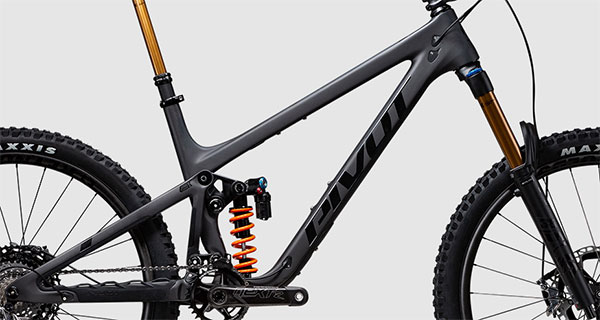
The name for coil spring suspension comes from the wound steel coil to control the compression and rebound. Like any other coil, this piece of carefully-crafted metal will return to its uncoiled state after being compressed, providing a natural rebound, but one that cannot be significantly adjusted.
This suspension system provides a linear or constant compression rate , rather than a progressive compression rate provided by an air spring. Coil springs provide smooth and consistent travel compression and vary between frame sizes and rider sizes. They are fairly easy to replace in case the stock coil spring isn’t working for you.
Air Spring Suspension
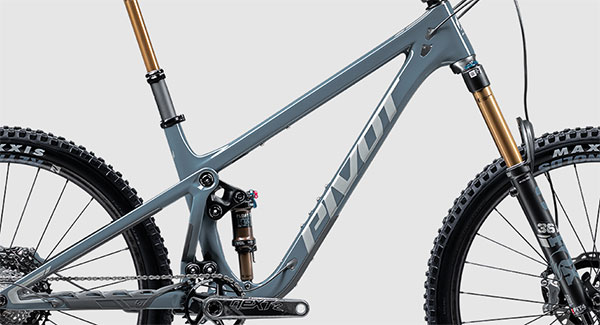
Air springs use pressurized air in a chamber to provide suspension through the front fork, and a progressive compression rate rather than linear. This means that the compression is softer at the beginning of the travel movement and tighter as more pressure and compression is applied.
There are a few main differences between coil spring and air spring suspension: performance, reliability, and adjustability.
Coil springs are good performers but less adjustable, while air springs are better performing overall, with more adjustability and lighter weight. However, coil springs are extremely reliable whereas air springs are less so.
However, the biggest difference between front fork suspension is not the type of spring (coil versus air), but rather the material, design, and cost of the fork. An expensive coil spring will always be better than a cheap air spring, and vice versa.
Rear suspension is much the same, with both coil and air spring versions available. These systems are also adjustable and come in many different makes and styles. Before getting into the rear suspension, let’s take a closer look at front suspension on mountain bikes.
When it first comes to choosing suspension, you need to know the terrain that you are going to tackle.
If you are only riding on paved roads, then you will be comfortable on a road bike with no suspension.
But if you enjoy city riding which occasionally takes you across beaten-up pavement and potholes, then a hybrid with front suspension will be a much better option.
Mountain bikes will almost always have suspension, with the exceptions being older frames and basic kids’ bikes .
Other than that, every modern mountain bike will at least have front suspension. These are called hardtails, and these are lighter mountain bikes that are certainly designed for off-road riding, but not the gnarliest of trails.

Hardtails are best for basic mountain bike trails, smooth dirt or gravel, double-track, and fire roads.
You can also use a hardtail for mixed-terrain rides, such as a commute that is part pavement and part dirt. These bikes are typically lighter than full suspension mountain bikes, so they are better for climbing. However, they are not always as comfortable as full suspension mountain bikes because of the…hard tails.
Lastly, hardtails are typically cheaper and easier to maintain than full-suspension mountain bikes. That’s what makes them a better choice for beginner mountain bikers.
You can find entry-level hardtail mountain bikes for $500-$1,000. High-end race models with carbon fiber frames and top-of-the-line components will cost $5,000-$7,000.
Best Hardtails
Full-Suspension

Full suspension mountain bikes are for experienced off-road riders who want to take their riding to the next level. These bikes are designed for handling steep, rough, and technical trails, including switchback descents, gaps, and jumps. Full suspension will help cushion impacts from all kinds of terrain, and lead to a more comfortable ride overall.
However, full-suspension mountain bikes are typically heavier and more expensive than hardtails, as well as being more difficult to maintain.
This is why full suspension mountain bikes are better for more experienced mountain bikers, and those who are willing to invest in a big upgrade to their off-road setup. Full suspension mountain bikes are not as good for climbing as compared to hardtails. But they will go downhill faster than any other bike.
By comparison, full-suspension mountain bikes can cost nearly twice as much as hardtail mountain bikes. An entry-level full suspension mountain bike will cost $1,000-$2,000, while the high-end race frames can cost $7,000-$10,000. Full suspension mountain bikes are quite the investment.
For the gnarliest trails, steepest descents, and biggest gaps, there is nothing better than a full-suspension mountain bike.
Best Full Suspension Mountain Bikes
What is the good suspension for a mountain bike?
Good suspension systems have to do with the material, manufacturer, and design of the suspension rather than the type or its capabilities. You also need a suspension system that matches the terrain, so a good suspension system is one that does what you need it to do. If you are an experienced downhill rider, then you a full suspension mountain bike will be a good setup for you. But if you are a beginner mountain biker who wants to try some tame trails and soft fire roads, then a hardtail mountain bike will be a good setup.
Do you need suspension on a mountain bike?
While you don’t necessarily need suspension on a mountain bike, suspension makes everything better. Suspension is necessary for cushioning, comfort, traction, and capabilities on all sorts of mountain biking terrain. So while you could certainly survive a mountain bike trail without suspension, you will end up with sore shoulders, a slow time, and probably crash a couple of times. Suspension makes mountain biking faster, safer, and much more fun.
What are the types of mountain bike suspension?
There are two main types of mountain bike suspension: front suspension and rear suspension. Front suspension is also known as front fork suspension because it is built into the fork of the frame, whereas rear suspension is also called the rear shock, and is built separately from the rear triangle but is housed inside the bike’s main triangle.
Mountain bikes with front suspension only are called hardtails, while mountain bikes with both front and rear suspension are called full suspension or dual suspension mountain bikes. There are no bikes with rear suspension only.
Is suspension on a bike worth it?
Suspension is always worth having on mountain bikes. As for other types of bikes, you don’t always need suspension because it adds weight and cost, and it is an extra piece of your bike to maintain. You don’t necessarily need suspension on a gravel bike or a hybrid, but it could certainly be nice to have if the terrain is rough enough.
Suspension improves comfort, confidence, and traction on all sorts of terrain, especially gnarly off-road trails and steep descents. If that sounds like terrain that you tackle, then suspension is 100% worth it.
Are hardtails faster than full suspension?
In general, hardtails are faster than full suspension mountain bikes on relatively smooth trails and terrain. This is because hardtails save weight by forgoing rear suspension, and their front fork suspensions are typically lighter as well. This allows you to climb and ride faster on a hardtail, but only if the terrain is relatively terrain. If the trails are steep and technical, then you will be losing much more traction and confidence in the corners compared to a full-suspension mountain bike.
What are hardtails good for?
Hardtails are great for smooth dirt roads, fire roads, gravel, double-track, and off-road climb. Compared to full suspension mountain bikes, hardtails are significantly lighter, though they are less comfortable and capable on rough terrain. So if you are a beginner mountain bike rider or you want to explore some relatively tame trails, a hardtail mountain bike is the lighter and cheaper option that will be perfect for you.
Do I really need full suspension?
Full suspension mountain bikes are designed to handle rough trails, steep descents, gnarly switchbacks, jumps, and bumpy off-road terrain. This is usually reserved for experienced mountain bikers looking to push their limits on technical trails. So if this sounds appealing to you, then you need a full-suspension mountain bike. But if this terrain sounds intimidating or completely new to you, then you can stick to the quieter and softer trails on a hardtail.
Related Topics:
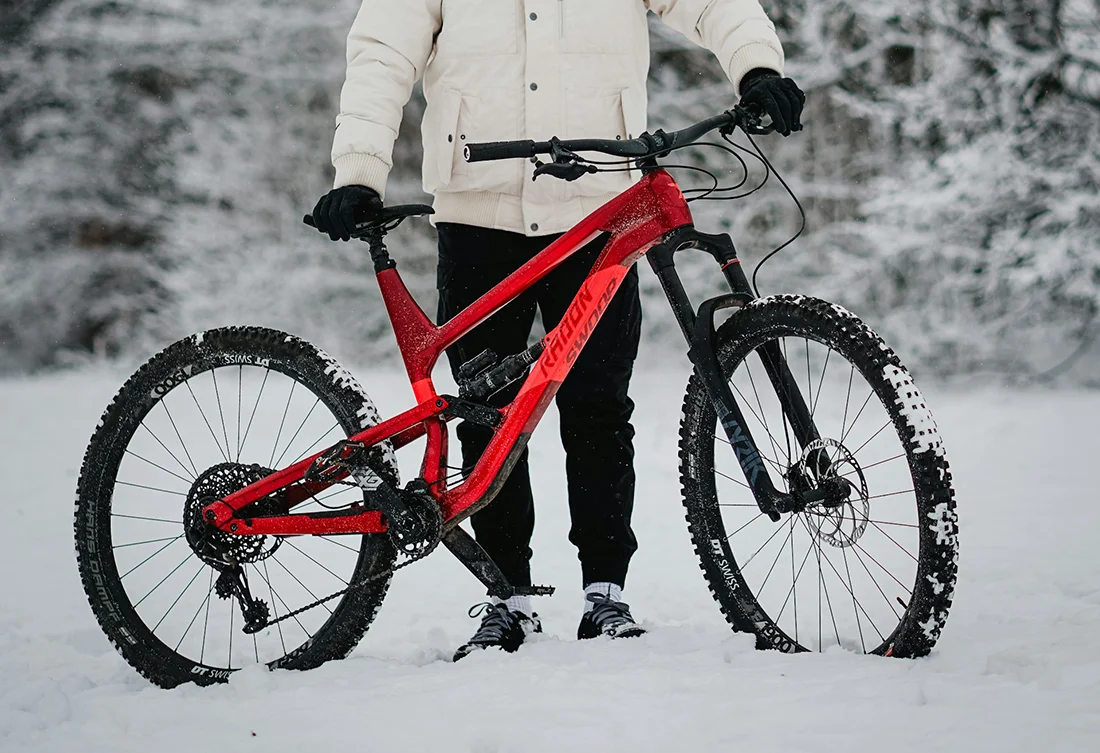
Mountain Bike Types Explained: Find Your Perfect Ride
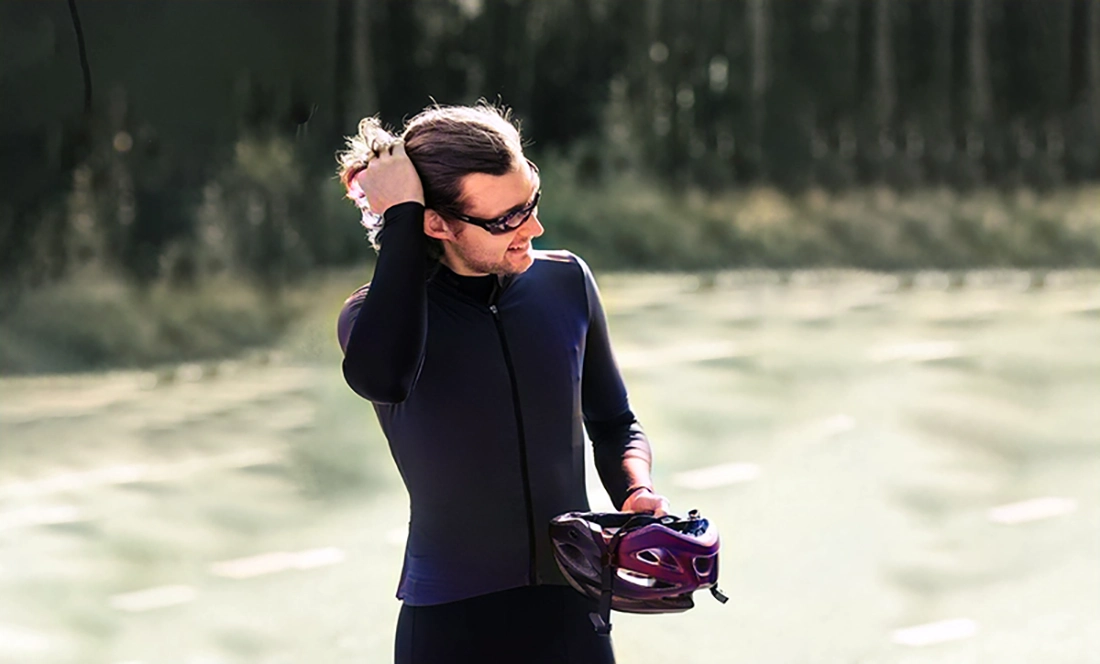
How to Prevent Helmet Hair While Cycling? Here Are Our Crucial Tips
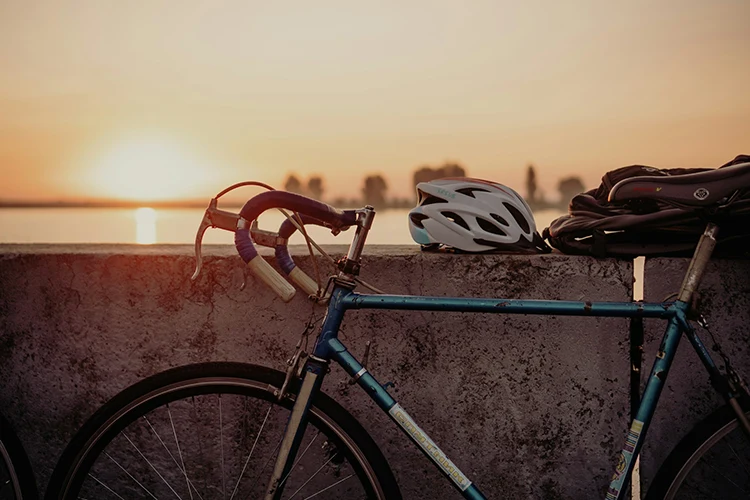
10 Cycling Essentials Every Cyclist Needs: Gear, Apparel, Tools, and More
2-FOR-1 GA TICKETS WITH OUTSIDE+
Don’t miss Thundercat, Fleet Foxes, and more at the Outside Festival.
GET TICKETS
BEST WEEK EVER
Try out unlimited access with 7 days of Outside+ for free.
Start Your Free Trial
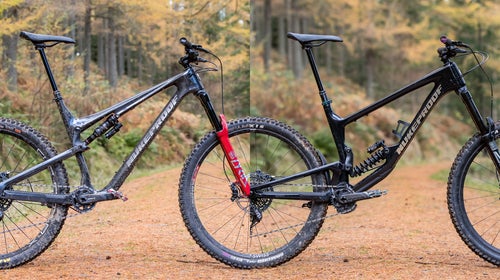

Short or Long Travel: Which Is the Best All-Around Mountain Bike?
How much slower does a modern long-travel bike climb? And what are the differences downhill?
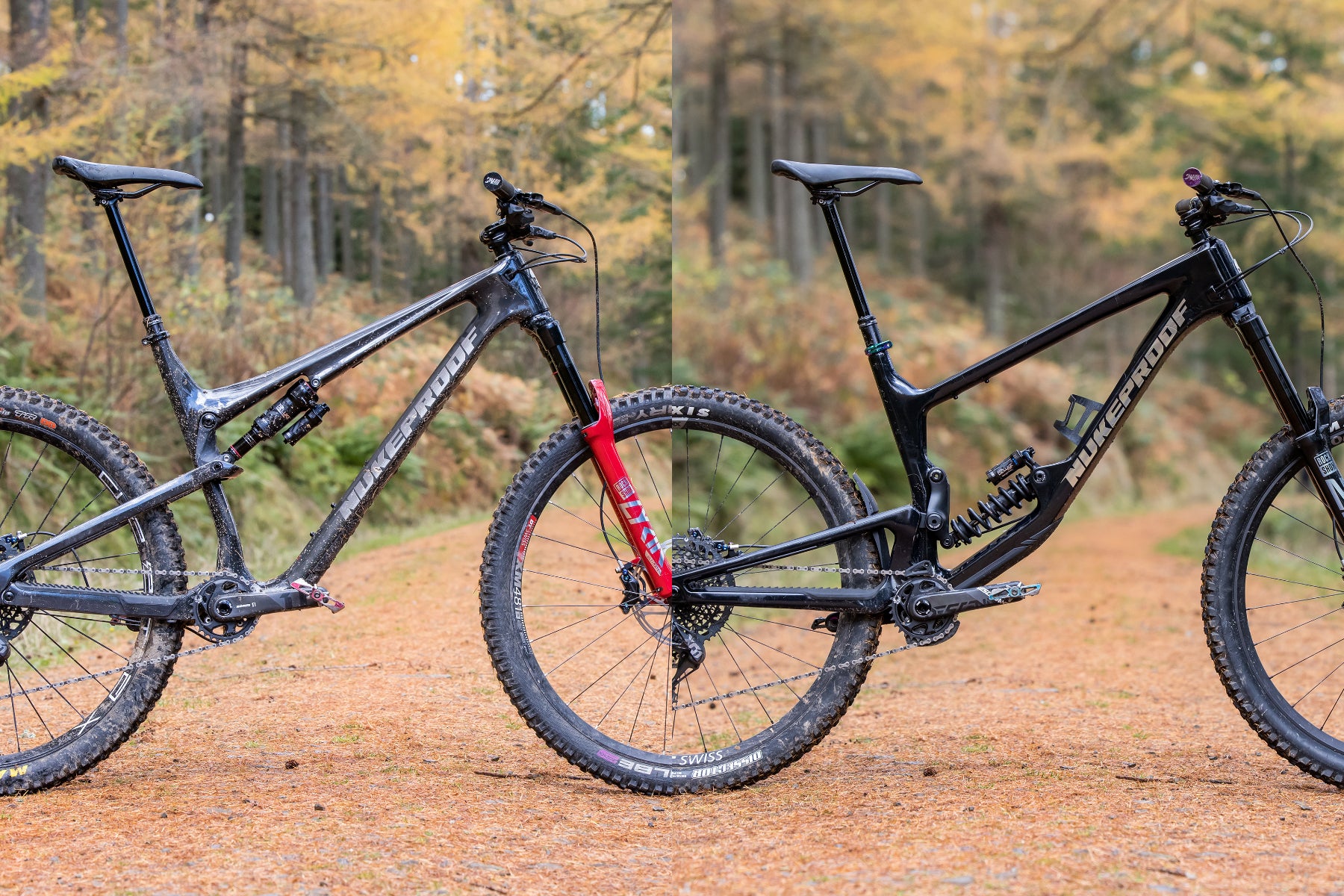
Heading out the door? Read this article on the Outside app available now on iOS devices for members! >","name":"in-content-cta","type":"link"}}'>Download the app .
If you want one bike to do everything, how much travel should it have? All bikes have to find a compromise between climbing and descending performance, and suspension travel is usually seen as a good indicator of where a bike sits on that spectrum.
But recently, short-travel trail bikes are a lot more capable, while long-travel bikes are much better at climbing. So how much slower is a modern long-travel bike uphill? And what are the differences downhill?
Caught up in all this is the question of tire choice. How much of the difference in climbing speed between an enduro bike and a trail bike comes down to the tires? Can fast-rolling tires close the gap? And can sticky tires make a short-travel bike descend as well as a long-travel one? Let’s find out.
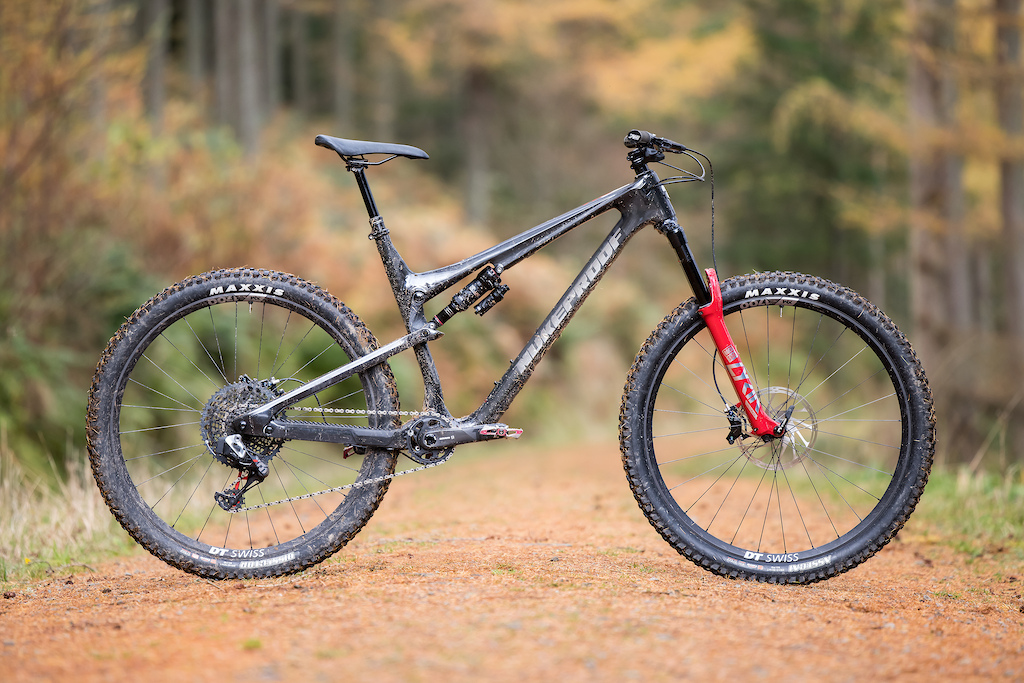
Nukeproof Reactor
• 130 / 150 mm travel • Weight as tested: 14.4 Kg / 31.7 lbs (“trail” tires, 200 mm rotors) • Size tested: XL • Price: $7,062
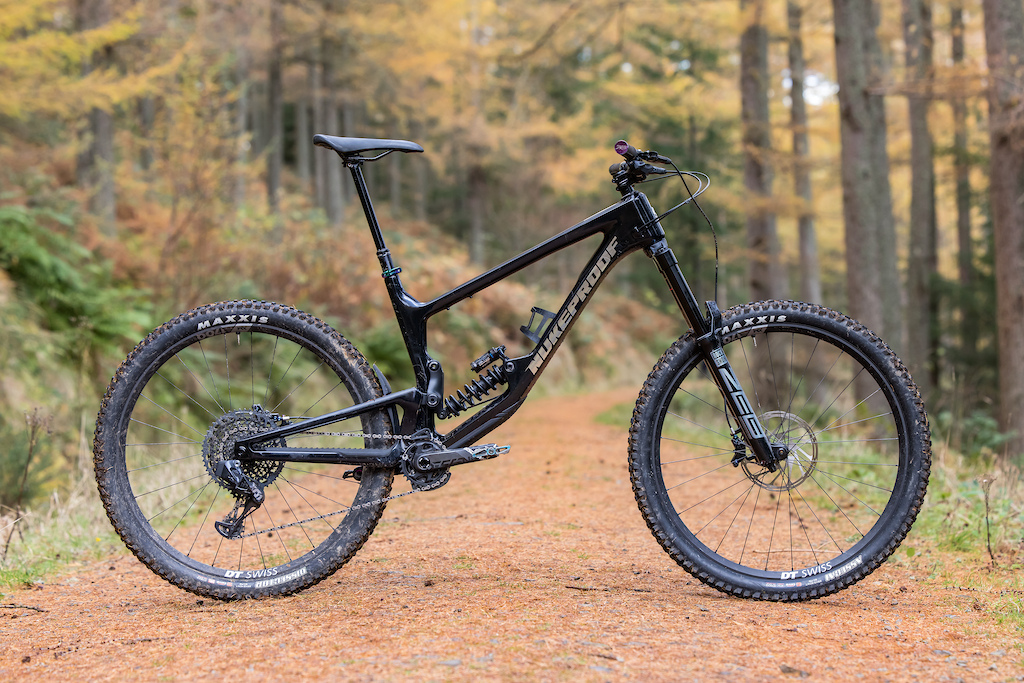
Nukeproof Giga
• 170 / 180 mm travel • Weight as tested: 15.2 Kg / 33.5 lbs (“trail” tires, air shock) • Size tested: XXL • Price: $7,415
To make things as comparable as possible, I got hold of a Nukeprof Reactor RS and a Nukeproof Giga RS. The Reactor has 130 millimeters of rear travel and 150 millimeters up front, while Giga serves up 170 millimeters (rear) and 180 millimeters (front). These models have identical brakes, drivetrains, and cockpits. With the same wheels and tires fitted, only the frame and fork are different. Both use full-carbon frames and RockShox Ultimate-level suspension. The Reactor has a Lyrik fork to the Giga’s Zeb, but the difference in chassis diameter is appropriate to the travel offered in each case.
Although the photos used here were taken with a coil shock fitted to the Giga, the testing was carried out with a RockShox Super Deluxe air shock to match the shock on the Reactor. I upgraded the rear rotor size on the Reactor to 200 millimeters so both bikes could accept the same wheels for comparative testing.
I set both bikes up with 30 percent shock sag and suspension settings as I would normally have them.
For the most part, I used the wheels that came stock on the Reactor for both bikes to remove the variable of tire choice. These tires were a Maxxis Dissector, EXO+ casing, MaxTerrra compound (rear) with a Maxxis Assegai, EXO casing, MaxxTerra compound (front). For brevity, I’ll call these the “trail” tires from now on. Fitting these tires and the air shock to the Giga dropped its weight to a respectable 15.2 kilograms – only 800 grams (1.8 pounds) more than the Reactor with the same wheels.
I also tested with a stickier pair of tires (fitted to another alloy wheelset for easier wheel swaps). These were a Maxxis Assegai in DoubleDown casing, MaxxGrip compound on the rear, with a Schwalbe Magic Mary, SuperGravity casing, Soft compound, on the front. We’ll call these the “enduro” tires. These wheels/tires weighed 600 grams more than the trail wheels/tires.
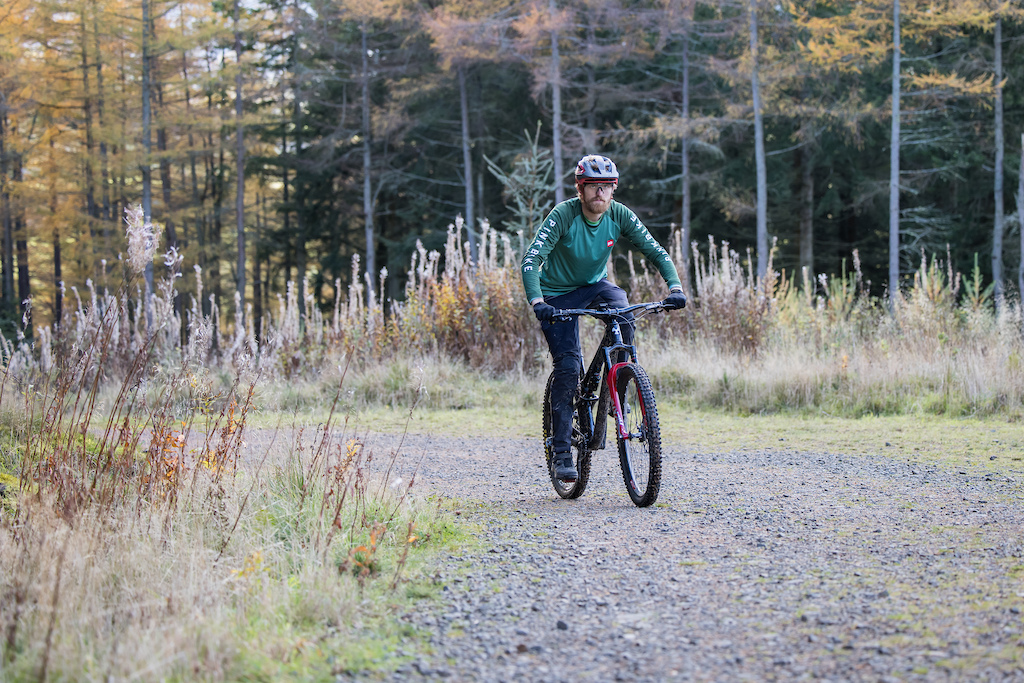
For the climbing test, I used a pair of SRM power meter pedals to control my effort, which I kept at a steady 250 watts. I rode both bikes up the same gentle and smooth fire road climb. I used a short climb so I could do five laps on each bike in quick succession and take an average. If I only did one or two longer climbs on each bike, there would be no way of knowing if any difference in times was down to the bike or just a fluke.
I did this first with the trail tires at my usual riding pressures (23 and 26 psi) then I re-tested the Reactor with the enduro tires. Here are the times:

As you might expect, the Giga was slower on average than the Reactor, but the average time was only 0.8 percent slower. Because the Reactor wasn’t consistently quicker, and the average difference between the bikes was so small, we can’t be sure from these numbers if the difference between the bikes is real or just a fluke. In science terms, the difference wasn’t statistically significant.
But even if we take the 0.8 percent difference at face value, that’s about what we’d expect from the weight difference between the two bikes alone, suggesting the travel per se (i.e. the pedaling efficiency) wasn’t having any effect.
In contrast, with the enduro tires fitted, the Reactor went 4.1 percent slower, or 3.4 percent slower than the Giga with the trail tires. In both cases, these are statistically significant differences, because the Reactor with Enduro tires was consistently slowest. To give that some context, over a half-hour climb, the enduro tires would add about one minute and fourteen seconds to the Reactor’s time. Or to go at the same pace, you’d need to produce about 260 watts instead of 250 watts; if you’re already working hard, that could be very noticeable.
The added weight of the heavier tires would only be expected to slow things down by at most 0.6 percent, so most of that difference is down to rolling resistance. This added drag will make covering ground slower on the flat and even downhills too (so long as traction and braking aren’t what’s limiting speed).
Subjectively, you can feel a little pedal bob from either bike, but there isn’t dramatically more with the Giga. The position is quite different due to the Reactor’s lower stack height and slacker seat tube angle (74.5 degrees vs. 78 degrees); this stretches out the spine which feels much less comfortable to me, especially on long climbs. Doing timed testing over technical climbs is virtually impossible because the time can vary so much from one run to the next depending on line choice, technique and luck, but when riding over bumpy terrain the Giga is noticeably smoother. The softer suspension obviously helps here but having your weight further in front of the rear axle also reduces how much your weight lifts when the rear wheel moves over a bump. Though I can’t put a number on it, I much preferred the Giga for technical climbs.

To see how they compare for descending, I chose a short local trail I know well with a good mix of roots, rocks, steep twisty sections and flat fast sections. It’s not the most technical trail in the world and it’s definitely not the roughest, but on the day of testing (which was a couple of days before taking these photographs), it was wet and slippery, making it a good challenge. To level the playing field and keep things simple, I stuck with the trail tires on the Giga and the enduro tires on the Reactor.

The Giga went first, and despite doing two laps to get up to speed on the course before getting the timer out, I shaved 2-3 seconds off my time from one run to the next. This is always a problem with timed testing. My first time on the Reactor (my fourth timed run of the day) matched the first run on the Giga. It improved from there but levelled out at one minute and sixteen seconds.
I did one more run on the Reactor with the trail tires and matched my fastest times, suggesting the stickier tires weren’t much of an advantage on this course anyway. I’m sure that on a more treacherous course—or in the hands of a rider who is better at finding the limit of grip—the enduro tires would become a significant advantage.
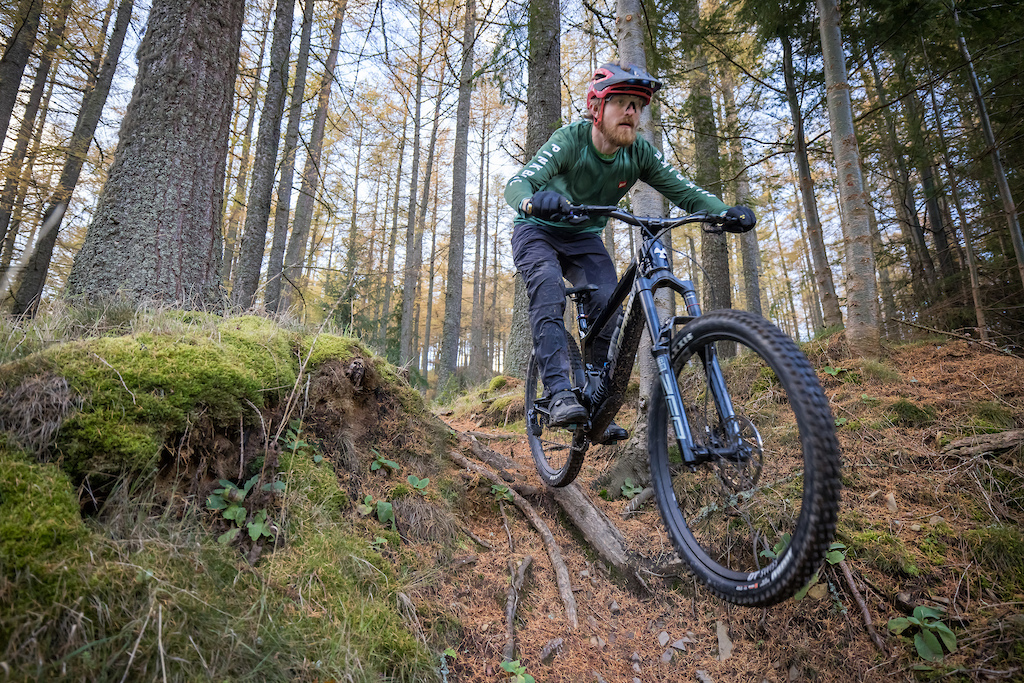
Subjectively, the enduro tires felt much more damped and surefooted and I was locking up less on the steep sections, but this didn’t seem to translate into more speed for me. Even with the sticky tires on the Reactor, the Giga felt much smoother, calmer, and more stable. The higher bar and slacker head angle combined with suspension that feels more settled “in the travel” makes going faster feel more within my comfort zone. I also felt like there was more time left on the table with the Giga, whereas the last two runs on the Reactor would be hard for me to improve on.
Because there are so many variables at play when descending, I wouldn’t read much into the times themselves. But they reveal that, although I felt closer to the edge on the Reactor, I was in fact going slower.

Closing Thoughts
The biggest takeaway for me is just how much difference tire choice makes for climbing speed. Sure, the enduro tires I tested are pretty draggy, but they’re not DH tires or mud spikes, and the trail tires (with an Assegai up front) are far from the fastest you can get. In fact, they held their own even on slippery descents.
I’m sure plenty of people don’t care about going slightly faster or feeling more comfortable on steep descents; in fact, I often hear people say they find it more fun to have a sketchier ride at slower speeds. But if that’s the case, why not fit slicker tires which will offer a real boost in climbing speed as a bonus? You could always use the lockout or run 10 percent sag if you want your enduro bike to feel sketchier! Personally, I have more fun on a long travel bike as it gives me the confidence to try new lines or ride them with more commitment.
The other surprise was that the Giga was barely slower uphill than the Reactor with the same tires, and if you want to close the efficiency gap even more you could always use the lockout.
One caveat here is that a power meter may not be the best way to measure and control effort in an efficiency test when comparing suspension efficiency. I discuss this with Mike Levy in this episode of the Pinkbike Podcast , but the bottom line is that I think the power meter method is valid for measuring efficiency when pedalling sitting down (as in this test), but it doesn’t work for out-of-the-saddle sprinting, and that’s where the extra travel is more likely to be a disadvantage.
It’s also fair to say the Reactor isn’t the fastest-climbing short-travel bike out there. But the Giga probably isn’t the most efficient among 170 millimeter+ bikes either. It’s based on a downhill bike and it’s designed to be even more gravity-focussed than Nukeproof’s Mega enduro bike. More to the point, it doesn’t have a huge amount of anti-squat , and higher anti-squat levels would probably make it climb even better. In one of Levy’s efficiency tests , the 170 millimeter-travel Santa Cruz Nomad (which has quite a lot of anti-squat) was faster than the 130 millimeter Ibis Mojo (despite having slower tires), suggesting a long-travel bike with generous anti-squat can be as just as efficient as a shorter travel one.
The bottom line is that ample suspension travel needn’t be a hindrance uphill, but grippy tires will slow you down a lot. So if you want one bike to do everything, it might make sense to pick a long-travel bike with a spare set of fast-rolling tires for mellower rides.
This article first appeared on our sister site, Pinkbike .
- Mountain Biking
Popular on Outside Online

Enjoy coverage of racing, history, food, culture, travel, and tech with access to unlimited digital content from Outside Network's iconic brands.
Healthy Living
- Clean Eating
- Vegetarian Times
- Yoga Journal
- Fly Fishing Film Tour
- National Park Trips
- Warren Miller
- Fastest Known Time
- Trail Runner
- Women's Running
- Bicycle Retailer & Industry News
- FinisherPix
- Outside Events Cycling Series
- Outside Shop
© 2024 Outside Interactive, Inc

- Mountain Bikes
Gravel Bikes
- Hybrid Bikes
- Electric Bikes
- Commuter Bikes
- Exercise Bikes
- Women’s Bikes
- Kids’ Bikes
- All Best Bike Brands
- Mountain Bike Brands
- Electric Bike Brands
- Bike Rack Brands
- Brand Review: Rad Power Bikes
- Brand Review: Ride1UP Bikes
Disclaimer: Bikexchange is reader-supported . We may earn an affiliate commission when you buy through the links on our site.
Different Types of Mountain Bikes Explained: From Rigid to Full-Suspension
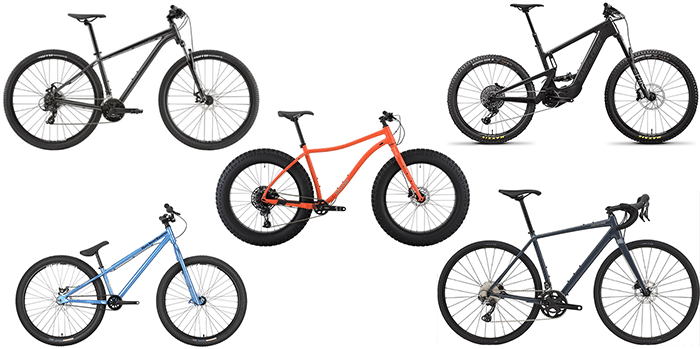
Mountain biking thrives on diversity, with each type of mountain bike tailored to the trail’s unique demands.
From the agile cross-country bikes that conquer climbs and sprints, to the robust trail workhorses designed for versatility across terrains, the spectrum of mountain bikes is as varied as the riders who buy them.
In addition to these, there are also the gravity-defying downhill machines, equipped for steep, heart-stopping descents, and the enduro models that blend uphill efficiency with downhill prowess.
Whether you’re weaving through tight singletracks or tackling rocky technical descents, understanding the nuances of these bikes empowers you to choose the perfect ride for your mountain adventure.
In this article, we’ll describe the most popular different types of mountain bikes and explain what each type is best for!
Three Main Types of Mountain Bikes
Rigid | Hardtail | Full-Suspension
Rigid Mountain Bikes
No Suspension

These mountain bikes have no suspension, but the comfort can be increased with the right tire pressure.
- Lighter – as there’s no extra weight that suspension adds.
- More efficient to keep the momentum of pedaling.
- Lower maintenance cost.
- Bumpy, hard on the wrists
Rigid bikes are suggested for someone who wants to stick to the roots of mountain biking or prefers the rigidity of the ride.
A rigid mountain bike has a rigid frame which means there’s no suspension whatsoever.
Although there’s still a small following to this bike type in the mountain biking community, a rigid MTB has some advantages such as not losing any extra energy one would need on a suspension to work. There’s little to no give to the ride, and it is the responsiveness that this bike type is preferred for.
All of the momentum is well carried over by the wheels, whereas you’d lose quite a bit of energy on the suspension.
The main reason people buy rigid bikes today is for the fun factor and retro feel . Rigid bikes require more attention for picking the right line compared to other types of mountain bikes, making a seemingly easy trail a more technical experience.
Best Rigid Mountain Bikes
Hardtail Mountain Bikes
Front Suspension Only
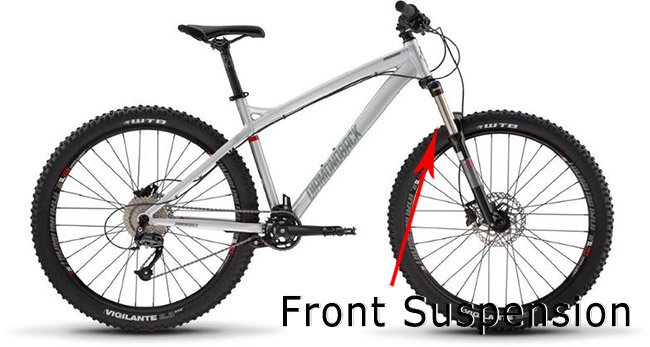
The purpose of the front suspension is to help absorb the initial impact of bumps, rocks, roots, and whatever else you come across on the trails.
- Lighter and more efficient than a full suspension
- Much more comfortable than a rigid MTB
- Best all-rounder mountain bike
- Good climbing capabilities
- Cheap hardtail mountain bikes have poor performance
- On rough terrain, a hardtail mountain bike is not as comfortable as the full suspension
The term hardtail stands for mountain bikes with front suspension.
The same bike geometry is also found on many hybrid and electric bikes as it absorbs the bumps and makes the ride much more comfortable. In terms of mountain biking, the lack of rear suspension makes hardtail MTBs more efficient to pedal (extra cushion requires more energy).
Although not as efficient as rigid mountain bikes, and not as comfortable as full-suspension bikes, there’s a large following to hardtail mountain bikes.
Suspension on the front also helps to prevent your hands from getting too sore on longer rides!
The average suspension travel on a hardtail mountain bike is between 80mm to 140mm, although the most common travel is 100mm to 120mm.
Types of Suspension Forks

The two main types of front suspension forks are Air forks and Coil forks .
- Coil Spring is a rather cheap and basic technique in terms of the mountain bike fork industry. Most lower-end bikes come equipped with a coil-type fork. This type is often found on not as demanding cycling disciplines such as hybrids, e-bikes, etc. They are generally maintenance-free and basic, great for recreational cyclists. Downhill mountain bikes, which take the most beating on the mountains, almost always use a coil shock on the rear.
- Air suspension tends to be lighter and easier to adjust. It is typically reserved for higher-cost mountain bikes designed for technical riding. They are also perfect for bikes intended for riding uphill as they significantly reduce the overall weight of the bike.
Suspension Fork Features
- Rebound: A higher rebound means a faster return. A lower rebound means slower and cushier travel to its extended state. To properly set the rebound on a bicycle fork, you should adjust it so it doesn’t jump back up without a “clunk” when you lift the front end while riding.
- Compression (Damping): Can be adjusted only on an air fork. Compression stands for the stability of the fork travel while riding and affects the response of the suspension.
- Lockout: This allows you to lock out the fork which is useful when riding on paved roads. It is not advised to use the lock when riding on trails as it can damage the fork!
Best Hardtail Mountain Bikes
Full-Suspension Mountain Bikes
Front and Rear Suspension
- Makes uneven terrain feel smoother
- Great for riders with previous injuries
- Suspension lockout for more efficient climbing
- Generally heavier than HT, and Rigid bikes
A full-suspension bike is a bike that has both front and rear suspension. Sometimes they are also called dual-suspension bikes.
These are meant for riders who regularly find themselves on rough off-road trails. Full-suspension bikes are ridden for leisure and racing more than they are for transportation.
Travel length on the front and rear can range from 100 – 200 mm, depending on the riding preferences and mountain bike type.
Depending on the model, there are different ways to adjust the rear shock just like the front fork:
A rear shock can have rebound and lockout, as well as many other features such as high-speed and low-speed compression.
Best Full-Suspension Mountain Bikes
Additional Popular Types of Mountain Bikes
Cross country (xc) mountain bikes.
70-120mm travel range

- Available in hardtail, full-suspension, or a rigid frame type
- 27.5” or 29” wheels
- 80 – 120mm suspension travel
- Relatively steep head angles (69 degrees or steeper)
- Prices range from $500 to $9,000+
Cross-country bikes , also known as downcountry bikes, have the least amount of travel compared to other mountain bikes.
XC bikes are preferred for their fast, zippy riding qualities. These bikes are designed to be ridden on anything from city streets to intermediate mountain bike trails.
They pedal well and usually absorb small bumps nicely, which is why they are the preferred choice for XC racing.
These bikes are meant for fast trails where one would need the right amount of cushion and rigidity without losing speed and energy.
Best Short-Travel Mountain Bikes
Trail Mountain Bikes
100 – 140mm travel range
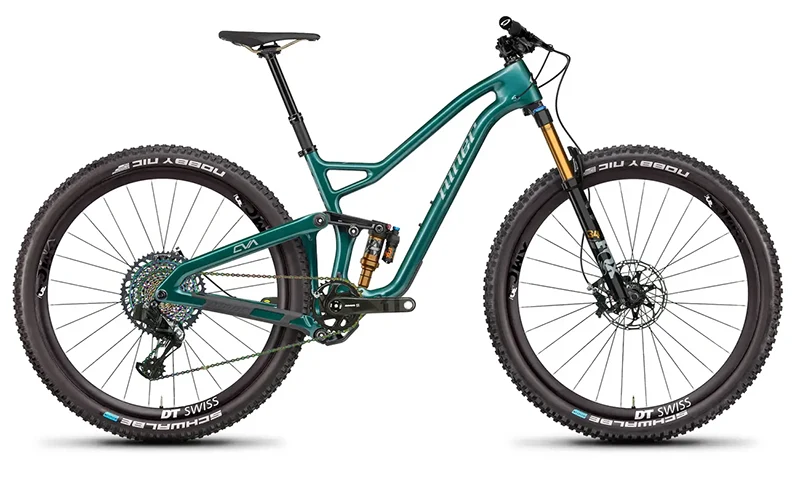
- Slack head tube angles around 67 degrees
- Prices start at $800 for a decent one
Trail bikes are some of the most popular all-rounder mountain bikes to get.
T rail mountain bikes are cross-country bikes with slacker geometry and more travel. Slightly heavier than XC bikes, trail bikes have a longer suspension range which works well on rougher singletrack trails.
They also often come with dropper seat posts that lower the saddle to help you descend more efficiently.
Trail bikes will handle small jumps and descents quite well. What plays a big role here is the comfortable geometry which allows riding long and short rides efficiently.
Best Trail Bikes
Enduro / All-Mountain Bikes
150 – 180mm of suspension travel front and rear

- Full Suspension setups
- Mostly 27.5” wheels, sometimes 29” size as well
- Tubeless wheels & tires
- Slack geometry: head tube angle is generally smaller than 67 degrees
Enduro is one of the most advanced mountain biking disciplines.
Consisting of climbs, descents, and fast and technical trails, means that an enduro mountain bike needs to be able to handle pretty much anything.
Only a notch below downhill bikes, Enduro bikes have 1×11 or 1×12 speed drivetrains, fully adjustable suspension, and slack geometry.
Enduro bikes thrive on trails that require maximum traction and customized suspension tune-ups for the best possible performance.
Unlike a downhill bike, enduro bikes are designed to ride up the hill, and later down the hill as well. Only experienced riders will make the most of an Enduro bike.
A Mullet bike is a sub-type of enduro mountain bikes with mixed wheel sizes. Mostly a mix of a rear 27.5″ wheel and a front 29″ wheel.
Best All-Mountain & Enduro Bikes
Downhill / Freeride Mountain Bikes
180-210mm front travel & 170-250mm rear travel

- Full-suspension setups only
- Usually 27.5” wheels (rarely 26” or 29”)
- Slack head angle of less than 65 degrees
- Single front chainring, 6 to 8-speed drivetrains are standard
Downhill and freeride bikes fall into a category of bikes designed to take a beating! Steep drops, huge jumps, gnarly terrain, and all the previous at the highest possible speed.
These bikes are engineered to handle a mass amount of stress without failure. For example, even downhill tires are made to be extra resilient to prevent punctures.
The geometry and parts on DH bikes have been designed so that riders can go over obstacles with maximum traction.
To summarize, downhill bikes are only meant to go downhill, and on specific trails. They are not as comfortable as everyday all-around bikes.
Best Downhill Bikes
Electric Mountain Bikes
Electric Motor and Battery

- 27.5″ and 29″ wheels
- 250W Mid-drive motors
- Class 1 – Pedal-assisted to 20 mph
- 1x front chainring, 1×12 is a standard drivetrain
Electric mountain bikes come in all sorts of forms and variations, but the majority of higher-end models feature a full-suspension setup.
Although good-quality E-MTBs start from around $3,500, there are cheaper hardtail versions available as well.
A mid-drive motor is a must, although cheaper electric MTBs come with a hub motor. Many eMTBs are built to offer better-assisted power when climbing or simply going for longer routes with some energy left over.
Click the button below to check out our Best Electric Mountain Bikes buying guide and see the top-rated models.
Best Electric Mountain Bikes
Rigid frame with oversized tires

- 3.8″ – 5.0″ wide tires
- 20″, 26″, 27.5″ wheels are around, although the 26″ is the most common
- 1x single chainring and wide range cassette
- Mechanical or hydraulic disc brakes
- Alloy / Steel / Carbon fiber frames
Fat bikes were originally built to handle sand and snow , but the demand has widened the spectrum for many recreational cyclists.
Although those chunky tires and a rigid frame might give a false signal that they are hard to ride, it is actually the other way around.
The large tires offer a lot of comfort, and the rigid frame helps to keep the momentum. These days more and more recreational cyclist have found their calling in the fat bike rides.
Typical fat bikes come with a rigid frame and 26″ wheels, but due to the large tires, it is equivalent to a 29″ wheel. Most fat bikes are lightweight and offer a ton of comfort on rugged trails which can’t be passed by with standard-size mountain bike tires.
If a fat mountain bike isn’t something for you, there are also many more variations of bikes with fat tire sizes, such as cruisers, folding, electric, and much more.
Best Fat Bikes Best Electric Fat Bikes
Road Frames and Wide Tires

- An ideal mixture of road and mountain
- 700c or 650b wheels
- Mechanical / Hydraulic disc brakes
Similar to touring bikes , gravel bikes are similar to performance road bikes designed to tackle gravel roads and hardpacked dirt roads.
Most gravel bikes come with road bike geometry and 700c or 650b wheels with knobby tires. They also have wider handlebars than road bikes, which allows you to have better control on rough terrain.
Unlike the best cyclocross bikes , which are intended for speed and racing, gravel bikes also have wide-range cassettes, eyelets for racks, fenders, and other accessories.
A gravel bike makes the perfect companion for commuter cyclists who are looking for speed, comfort, and accessibility to steer away from the paved roads from time to time.
Best Gravel Bikes Best Cheap Gravel Bikes Under $2,000
Dirt Jump Mountain Bikes
Dirt / Park / Freestyle
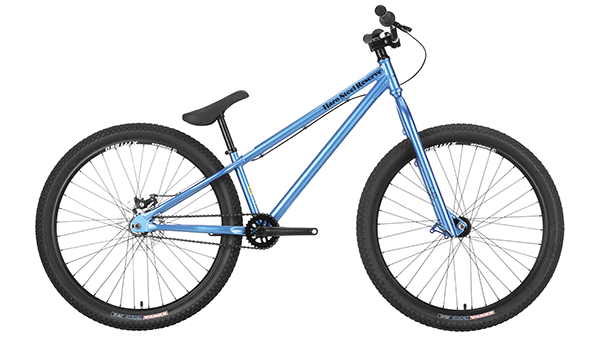
- Single-speed
- Aluminum = Lighter / Steel = More durable
- Rigid or with front suspension
- Super strong components, especially hubs, wheels, frame, etc.
Dirt jump bikes attract adrenaline junkies who are looking to master jumps and tricks on custom-made parks and dirt jumps.
Whether it is a concrete skate park or custom-made jumps, dirt bike riding isn’t for the faint-hearted, that’s for sure!
Dirt jump bikes are built to do the same tricks as the best BMX bikes while having a better reach and speed for descending, jumps, landings, and of course – tricks.
Trial Mountain Bikes
Specialized Bikes Built for Tricks
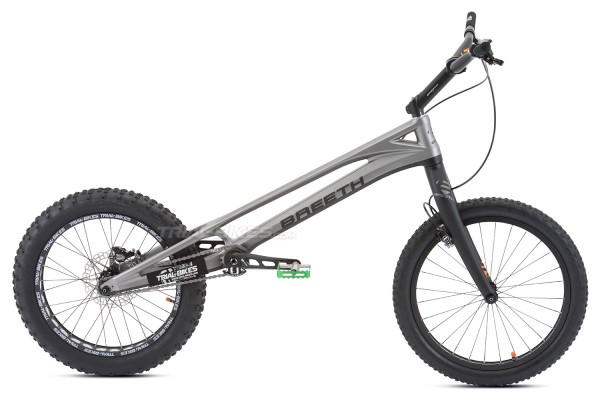
Image Credit: trial-bikes.com
- Advanced balance, bike handling, and physical stamina is needed
- Super durable components
- 20″, 24″, 26″ wheels
Trial biking consists of an obstacle course where the goal is to do a certain trick or jump a gap without setting foot on the ground. The stunts generally start from standing still on a bike.
In this discipline, a cyclist has mastered bicycle control to a high degree.
Trial bikes might seem simple in their build, but they do cost a fortune! Every single detail about the bike is put together to offer minimum weight and maximum durability.
To sum up, mountain biking offers a bike for every trail and every type of rider.
Rigid bikes are basic and light, great for smooth trails. Hardtails add a little suspension for comfort and easier climbs. Full-suspension bikes smooth out the technical terrain and are great for serious off-road fun.
Whether you’re racing down a hill or cruising through the woods, there’s a mountain bike built for the experience.
Share this on:
About the Author

Sam Millers
Leave a reply cancel reply.
Your email address will not be published. Required fields are marked *

Types of mountain bikes: all the different mountain bike categories explained
From hardtails to full-suspension bikes, this is our guide to the different types of mountain bikes and what they're intended to do

Anybody who’s stepped foot in a bike shop or pulled up to a trailhead knows that there is an abundance of different types of mountain bikes out there. Plus, sites like this one constantly writing about terms like ‘enduro’ and ‘cross-country’ can make things confusing.
Choosing the best mountain bike for your type of riding can be tricky, the good thing is that there are some general rules that define what category bikes are placed in to make things easier. Continue reading and we’ll give you a rundown of the basics and then discuss how bikes are constantly evolving, and with that, blending the different types of mountain bikes and mountain bike disciplines.
Hardtail vs. full-suspension
There are two main categories of mountain bikes: hardtails and full-suspension bikes. Hardtails do not have a rear shock and have either a suspension fork or a rigid fork. Full-suspension bikes are defined by having both front and rear suspension.
Because they have fewer components, hardtails are cheaper than full-suspension bikes, but there are top-of-the-line hardtails too. On the budget end of the spectrum, hardtails are generally designed for simpler cross-country and trail riding. That means they can ride anything from dirt roads to singletrack, but they will struggle when the trails get more technical.
Brands also make hardtails that are meant for more aggressive riding. These bikes start with a basic hardtail frame design, but their geometry is slacker for more stability and control on the descents. These hardtails will also feature forks with more travel, beefier tires, and dropper seat posts.
At the top end, hardtails are made from carbon fiber and designed for racing. These bikes are extremely lightweight and efficient. They are used for races that feature a lot of climbing or smoother trails. When the trails get more rough and technical, racers will use a full-suspension bike.
As stated above, full-suspension bikes have both a front fork and rear shock. Full-suspension bikes are grouped into categories like cross-country, trail riding, enduro, and downhill, which we have listed here.
It should also be noted that nearly all types of bikes are now offered in both 29er and 27.5-inch wheel sizes. Manufacturers are now offering bikes in ‘mullet’ or MX wheel size setups, predominantly gravity orientated enduro and downhill bikes, they are setup with a 29er front wheel and 27.5-inch rear wheel.
- Best hardtail mountain bikes
- Best budget hardtails
Cross-country bikes
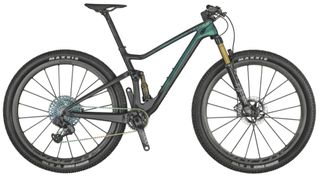
Full-suspension cross-country bikes feature steeper geometry than other types of mountain bikes and are designed for pure speed and efficiency. They generally have no more than 120mm of suspension travel, and the suspension design is optimized for efficiency.
The suspension on a cross-country bike should not engage or ‘bob’ when the rider pedals. Each manufacturer accomplishes this in different ways, but one unique example is Specialized’s Brain system. On the Specialized Epic, the suspension's Brain system does not engage until it senses a bump. Fox’s Live Valve system works in a similar way but uses electronic sensors rather than valves.
The surging trend of downcountry bikes takes the efficiency of an XC race bike but compromises the all-out lightweight by adding a little more capability. Downcountry bikes sit around 120mm of travel and get specced with components that increase descending capability such as tougher tires and longer dropper posts. Downcountry bikes can be considered different from trail bikes as the frames are generally modified XC frames rather than a specific design.
- Best full-suspension mountain bikes
- Best lightweight mountain bikes under 10kg
Trail bikes
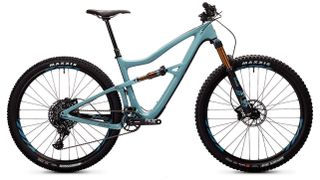
Trail riding and the corresponding trail bikes refer to what can be thought of as ‘everyday’ mountain bike riding. Trail bikes are designed to have as much fun as possible on any given terrain and be just as capable on the climbs as they are on the descents. Trail bikes have traditionally been thought of as jack of all trades bikes. Though if the trail bikes of yesteryear were masters of none, technological advancements have made them masters of a lot.
The modern trail bike’s geometry is slacker than a cross-country bike but not quite as slack as an enduro bike. Trail bikes are perhaps the broadest category of mountain bikes, but they range from 130 to 150mm of suspension travel.
A trail bike will certainly have a dropper post, and it will have more powerful brakes than a cross-country bike. The tires will be beefier too, and the suspension will feature models like the RockShox Pike or Fox 36.
- Best trail bikes
- Best women’s trail bikes
Enduro bikes
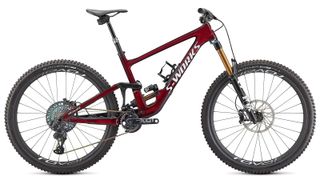
Enduro bikes grew out of the emergence of enduro racing, where riders compete on a long course full of challenging climbs and descents, but they only race against the clock on the downhill sections.
Enduro bikes are designed to be able to climb up to the top of the mountain but really shine on the way back down. For this reason, they feature more than 150mm of suspension travel and an even slacker frame. The components will all be beefed up to handle the rigors of challenging, rough terrain. If a trail bike is a jack of all trades, then enduro bikes are biased toward downhill performance.
Pre the advent of the enduro race format these bikes were described as all-mountain bikes. The all-mountain term is not as common anymore however it is usually used to describe a bike with between 140mm and 160mm of travel.
- Best enduro mountain bikes
Downhill bikes

Downhill bikes are meant for one thing: going downhill fast. They are completely optimized for the most challenging downhill trails, and if you try going uphill on one, you’ll probably be better off walking.
Downhill bikes generally have around 200mm of suspension travel and the burliest components. What makes downhill bikes stand out are dual-crown forks, like the RockShox BoXXer or Fox 40. They will often have coil shocks, but air shocks are available too. Brands make downhill-specific brakes, drivetrains, and components because the requirements of downhill bikes are so specific and intense.
- Best downhill mountain bikes
Blending of the disciplines
With improvements in bike design and technology, bikes are starting to blur the lines between the different categories. For instance, is a 150mm bike a trail bike or an enduro bike? It can be hard to tell. That’s one reason why you should always test ride a bike before buying to observe its individual characteristics.
One interesting development in bike design in recent years is downcountry or more aggressive cross-country bikes. Downcountry bikes, like the Specialized Epic Evo or Cannondale Scalpel SE, feature slacker geometry than traditional cross-country race bikes to make them all-rounder trail rippers that blend XC race bikes and trail bikes.
Freeride is another example. There aren’t necessarily freeride-specific bikes, with riders choosing the bike that best fits their needs. Many will use a downhill bike, but some prefer single crown enduro bikes. There are even bikes meant for slopestyle or dual-slalom competitions, but many brands don’t even offer them as standard production bikes. Dirt jump bikes predominantly hardtails, although there are short travel full-suspension options available, and are meant for jumping or skatepark riding.
There is beauty in the variety of mountain bikes. Today, riders can truly customize their bike to the type of riding they do and where they live. The best way to figure this out for yourself is to get to riding and follow the fun.
- Mountain bike suspension : everything you need to know
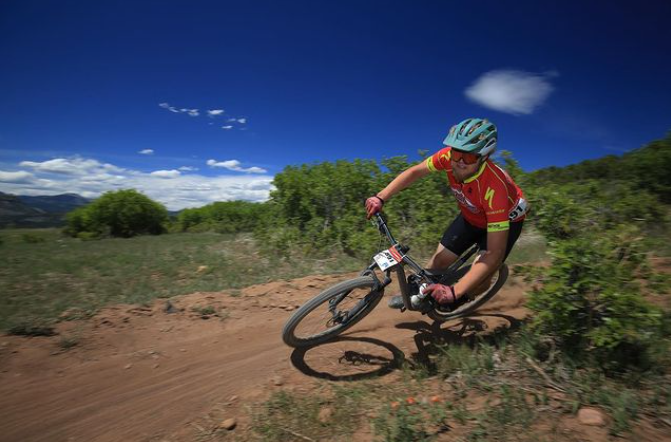
Ryan Simonovich has been riding and racing for nearly a decade. He got his start as a cross-country mountain bike racer in California, where he cultivated his love for riding all types of bikes. Ryan eventually gravitated toward enduro and downhill racing but has also been found in the occasional road and cyclo-cross events. Today, he regularly rides the trails of Durango, Colorado, and is aiming to make a career out of chronicling the sport of cycling.
Rides: Santa Cruz Hightower, Specialized Tarmac SL4
Argon 18 Dark Matter review – one gravel bike for everything?
Rigid vs suspension gravel fork – which is faster? Well, the answer is not quite that straightforward
Yeti builds on the SB165's Red Bull Rampage legacy and says the latest addition to its next-gen mountain bike range is more capable than ever
Most Popular
By Guy Kesteven 15 March 2024
By Paul Brett 13 March 2024
By Guy Kesteven 13 March 2024
By Guy Kesteven 8 March 2024
By Neal Hunt 4 March 2024
By Guy Kesteven 1 March 2024
By Paul Brett 29 February 2024
By Graham Cottingham 26 February 2024
By Guy Kesteven 23 February 2024
By Paul Brett 21 February 2024
By Guy Kesteven 20 February 2024
- How to Tie a Tie
- Best Coffee Beans
- How to Shape a Beard
- Best Sweaters for Men
- Most Expensive Cognac
- Monos vs Away Luggage
- Best Luxury Hotel Chains
- Fastest Cars in the World
- Ernest Hemingway Books
- What Does CBD Feel Like?
- Canada Goose Alternatives
- Fastest Motorcycles in the World
Mountain bike terminology and jargon, explained: What everything on your bike is actually named
Mountain bike terms, explained and demystified.

I hear it constantly, “I just got a new set of forks on my mountain bike.” I hear it and cringe. A set of forks? Any spoons or butter knives with your forks?
Mountain bike frame
Mountain bike suspension, mountain bike drivetrain, mountain bike wheels.
Regardless of the type of mountain bike you have, there are specific names for the parts of the bike frame and components. It isn’t uncommon to hear mountain bikers referring to the parts of their mountain bikes by incorrect names.
Especially if they are new to mountain biking.
At the very least, knowing the correct names of the parts of your mountain bike and its components makes for a quicker YouTube search when you have an issue.
Your mountain bike frame can be broken into two sections—the front triangle and the rear triangle. This is especially true if you have a full-suspension mountain bike , as you can literally separate the two ends.
- 3 things you need to know about mountain biking in Sedona
- Is the PEARL iZUMi X-Alp Launch mountain bike shoe for you?
- You know you’re a mountain biker if…
These two triangles are each made up of multiple tubes, welded or formed together, depending on the actual material of the mountain bike frame. And as you can imagine, each of these tubes has a different name.
In this section, I will not discuss all the rocker arms and linkage that make up the rear suspension. While linkage and rockers exist on nearly every full-suspension mountain bike, each suspension design differs. The parts discussed in this article are consistent from bike to bike.
Front triangle
Three main tubes make up your mountain bike’s front triangle—the head tube, the top tube, and the down tube.
- The head tube is the very front of your mountain bike frame, just beneath your handlebars. It houses the headset bearings and steer tube of your fork.
- The top tube extends from the top of the head tube and runs back toward your seat, connecting again at the top of the seat tube.
- The down tube , sometimes called a bottom tube, mirrors the top tube, running from the bottom of the head tube to the bottom of the seat tube, turning into the bottom bracket housing.
Rear triangle
The rear triangle is composed of two tubes. These tubes essentially connect at the seat post, but on a full-suspension mountain bike, linkage and rockers actually connect the tubes.
- The chainstays essentially come from the bottom bracket housing and run straight back to the mountain bike’s rear axle. The chain on your mountain bike goes around the chainstay on the drive side of your bike.
- The seatstays are just above the chainstays on either side of your rear wheel. They intersect with the chainstays at the rear axle and run up near the top of your seat post.
The seat tube is where the front and rear triangles meet on your mountain bike. The seat tube is directly under your seat and houses your seatpost. At the bottom of the seat tube is the bottom bracket housing. This holds the bottom bracket and bearings, an essential drivetrain component.
Two main components make up the suspension on your mountain bike . First is the fork. The fork is the front suspension on your mountain bike. It is a fork—singular—not “forks,” despite many using the term, and certainly not “front shocks.”
A mountain bike fork is made up of many intricate parts—two of the main parts worth mentioning are the stanchions and lowers . The lowers house the stanchions, among all the other parts of the fork. The stanchions connect the fork’s lower to the fork’s crown.
If your mountain bike is a hardtail, this is where this section stops. But if you mountain biking on a full suspension, you also have a rear shock or shock. If you use the term “shock” in a bike shop, the mechanics will assume you are talking about the rear shock.
The shock’s job is to absorb impacts on the trail, both big and small. Shocks also help provide traction for the back end of the bike.
If you’ve consumed mountain bike content on The Manual, you’ve likely heard the term “drivetrain.” If you have wondered what this means, you’re not alone. Essentially, the drivetrain has everything to do with your gears and the mechanisms that change them.
Here’s everything that makes up your drivetrain .
- The cassette is all the individual gears, or cogs, on your mountain bike and is attached to the rear hub of your wheel. In recent years, drivetrain manufacturers have bumped the number of cogs to twelve, ranging from around ten teeth in the highest gear to 52 teeth in the lowest.
- The derailleur hangs out with the cassette and is the mechanism responsible for moving the chain from one cog to the next. The derailleur is connected to a shifter (not pictured) on the handlebars.
- The chainring is the other “cog” on the mountain bike. This is connected to the bottom bracket at the bottom intersection of the front and rear triangles.
- The chain is likely the only part of the drivetrain that is not misidentified. It goes around the chainring and cassette, connecting the drivetrain.
- The crankarm , crank, or cranks, when mentioned together, hold the pedals. One crankarm is fixed to the chainring and propels the mountain bike forward as you pedal.
- The bottom bracket is the mechanism that connects the crankarms, allowing for pedaling and propelling the mountain bike forward.
The word “tire” is often used to refer to a wheel . Tires and wheels are different, and a wheel actually has several parts that make it up.
- The wheel , or rim, is the metal or carbon fiber hoop that the tire sits on. Modern mountain bike wheels are tubeless, similar to cars, and use tire sealant rather than innertubes.
- Spokes connect the wheel to the hub. If building a wheelset, make sure your wheels and hubs take the same amount of spokes—usually 28 or 32.
- The hub is in the center of the wheel. It houses bearings and, if it is the rear hub, a ratcheting system that engages the cassette. The front and rear axles go through the hubs.
- Tires are probably what we are most familiar with, yet many still call the “wheel” a “tire.” Tires come in different sizes and tread patterns. Your local bike shop has good suggestions for what set of tires best matches the terrain in your area.
There you have it, the meat and potatoes of mountain bike labels. Now that you know, you have no excuses.
Editors' Recommendations
- There’s actually a great reason for that red light on your camping headlamp
- 3 must dos before riding your new mountain bike
- This van life camper van sleeps 8, goes everywhere, and you can rent it for less than a hotel would cost
- Hop on the best mountain bikes for under $1,000 – Trek, Specialized, and more
- 3 mountain bike trends we hope to see the industry adopt

At The Manual, we are privileged to review some phenomenal products. This opportunity has included some excellent mountain bike components and entire bikes themselves.
Of all the products we’ve received and I have been able to test and review, the Revel Rail 29 is near the top of the “wow” list. I spent the last few months on the Rail, and it is safe to say that this mountain bike impressed me perhaps more than any other mountain bike I have ever ridden.
- Fashion & Style
If you spend most of your time outdoors, everyday Apple Watch bands might not make the cut. While suitable for everyday use, normal Apple Watch bands may have several limitations for an outdoorsman engaged in demanding activities.
For these reasons, you should opt for Apple Watch bands that are specially designed to withstand the rigors of the outdoors with features like enhanced durability, water resistance, comfort, secure fit, and any additional functionalities tailored to outdoor and sport-specific needs.
There are a lot of different things to consider when you are considering getting a mountain bike. For many, the decision will ultimately come down to price.
To save money, some may buy an entry-level mountain bike with cheaper components, intending to upgrade those components. Others turn to classified ads to find a good deal on a used mountain bike.
- Help Center
- Chat with a Ride Guide
- 1-866-401-9636
- Retail Store
- Bike Services
Reset Password
We will send you an email to reset your password.
Don't have an account? Create an account
Create Account
Already have an account? Sign In
- Favorite your products & save them to your account
- Save a search & get notified when new products drop
- Be first to know about the latest events & promotions
Bike Finder
Results have arrived, the mountain bike spectrum: 6 mtb types explained.
There are a lot of different bike types within mountain biking. We break down the 6 main categories so you can figure out what type of mountain bike is best for you and your trails.
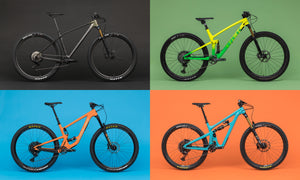
Written by: Bruce Lin
Published on: Aug 24, 2023
Posted in: Features
Clockwise from top left: Orbea Alma (XC), Trek Top Fuel (Downcountry), Yeti SB150 (Enduro), Santa Cruz Hightower (Trail)
Modern cycling is a sport full of endless categorization. Bikes are designed and engineered to excel at particular types of riding, so bike categories have evolved as a way to neatly define what these bikes are meant to do. But with so much minutia, crossover, and opinion in the mix, bike categories can sometimes get muddy and confusing.
Mountain biking might be the most confusing discipline with the greatest diversity of bike categories. The mountain bike spectrum is huge and there is no single archetypal mountain bike . So what are the main mountain bike categories you should know and what are the differences?
[button] Shop Mountain Bikes [/button]
The Mountain Bike Spectrum: The 6 Modern MTB Types

- Cross Country
- Downcountry
Hardcore Hardtails
There are 3 key traits that separate mountain bikes into particular categories: suspension travel, geometry , and weight . There’s a lot of overlap between categories and there are always going to be outliers in each category, especially when it comes to geometry and weight. Of the three key traits, suspension is the most reliable indicator of what a bike’s intended purpose is, so that will be our main focus.
Hardtail vs. Full-Suspension Mountain Bikes
Many MTB categories will have both hardtail and full-suspension options. The most common hardtails are XC hardtails and trail hardtails which will use forks in the 100-140mm travel range like their full-suspension counterparts. There are enduro hardtails too, but they’re a bit of a niche category, and many riders now refer to them as “ hardcore hardtails .”
Choosing between a hardtail or a full-suspension often comes down to budget, terrain, and personal preference. In general, hardtails are often cheaper to own and maintain than an equivalent full-suspension. If your terrain isn’t especially technical or gnarly, then a hardtail may suit it better than a full-suspension. XC racers might choose an XC hardtail for smooth courses because it will be lighter and have better pedaling efficiency. Some riders also just prefer the direct feedback, pedaling efficiency, and simplicity that a hardtail provides.
Cross Country (XC) Mountain Bikes

Suspension travel: 60-120mm
Climbing / descending performance: 80% climbing / 20% descending
What are they: XC bikes are made to excel at cross-country riding and racing. They are generally the lightest mountain bikes and have geometry designed for quick and agile handling, especially when climbing. They're designed to cover a lot of ground as efficiently as possible, so XC bikes have the least amount of suspension travel to maximize pedaling efficiency. Most XC race bikes have 100mm of travel or less, but there are some XC bikes that have increased to 120mm of travel to handle more technical modern XC race courses.
Who are they for: XC racers. Riders who want to maximize climbing speed or speed on flat or rolling terrain. Riders who regularly ride mellower trails and terrain.
[product-block handle="7424965214400-orbea-oiz-m11-axs-mountain-bike-2023-medium"/]
Popular examples: Specialized Epic, Trek Supercaliber, Cannondale Scalpel, Scott Spark RC, Orbea Oiz
Downcountry Mountain Bikes

Suspension travel: 110-130mm
Climbing / descending performance: 70% climbing / 30% descending
What are they: Downcountry is a newer category (some might call it a sub-category of XC) that splits the difference between XC and trail. They can be thought of as XC bikes that have been beefed up with trail components like wider handlebars, shorter stems, and beefier tires. They often have slightly longer and/or slacker geometry too to improve their downhill capabilities. Suspension travel, pedaling efficiency, and weight are closer to the XC end of the spectrum, but downcountry bikes will be slightly more confidence-inspiring on descents than a dedicated XC race bike.
Who are they for: XC racers who want a more versatile everyday bike for trail riding. Riders who care about climbing speed or riding long distances but still want a capable descender.
[product-block handle="7509355987136-specialized-epic-evo-mountain-bike-2021-medium"/]
Popular examples: Specialized Epic Evo, Trek Top Fuel, Santa Cruz Blur TR, Transition Spur, Rocky Mountain Element
Trail Mountain Bikes

Suspension travel: 120-150mm
Climbing / descending performance: 50% climbing / 50% descending
What are they: Trail bikes are the largest and most popular category of mountain bikes. They are generalists and all-rounders made to handle the widest variety of terrain. In terms of geometry and weight, they tend to be right in the middle, splitting the difference between climbing and descending performance. When it comes to travel, trail bikes generally are in the middle, but they also provide a big range of options. Shorter travel options with 120-140mm of travel are generally great do-it-all quiver-killer bikes that work nearly anywhere, while longer travel options with 140-150mm of travel are typically a bit more downhill-focused.
Who are they for: Riders who want one bike that can handle nearly any trail or style of riding. Riders doing a good mix of climbing and descending on anything from mellow flow to technical and gnarly trails.
[product-block handle="7498748625088-trek-fuel-ex-gx-axs-gen-6-mountain-bike-2023-x-large"/]
Popular examples: Specialized Stumpjumper, Trek Fuel EX, Yeti SB130/SB140, Santa Cruz Hightower, Orbea Occam
Enduro Mountain Bikes

Suspension travel: 140-180mm
Climbing / descending performance: 20% climbing / 80% descending
What are they: Enduro bikes are made to excel at enduro racing and downhill-oriented riding. They have more suspension travel and slacker and longer geometry than trail bikes to improve downhill capability and increase confidence. They are also built with heavier and tougher components to survive the rigors of enduro racing and downhill riding. Unlike a dedicated downhill (DH) bike, however, enduro bikes are also designed to pedal well, so riders can still pedal uphill to explore and access regular trails.
Who are they for: Enduro racers. Riders who want to maximize their downhill speed and confidence, especially on technical and gnarly trails, but who still need to be able to pedal to the top of the hill.
[product-block handle="6660158980288-rocky-mountain-altitude-carbon-50-mountain-bike-2022-medium"/]
Popular examples: Specialized Enduro, Trek Slash, Yeti SB150/SB160, Santa Cruz Megatower, Orbea Rallon, Rocky Mountain Altitude

Suspension travel: 130-160mm
What are they: Hardcore hardtails are essentially enduro hardtails, but they’re worth separating out into their own category because they are a more niche category. While many XC racers and trail riders will choose between hardtail and full-suspension options, very few enduro racers and downhill enthusiasts will pick a hardtail. Hardcore hardtail riders are generally looking for a unique riding experience that combines the slack geometry and downhill capabilities of an enduro bike with the direct feel, simplicity, or lower cost of a hardtail. These people generally already know who they are.
Who are they for: Riders who want a unique, downhill-focused hardtail to take on technical and gnarly trails.
[product-block handle="7505606017216-chromag-wideangle-mountain-bike-2019-medium"/]
Popular examples: Norco Torrent, Commencal META HT, Kona Honzo / Hozo ESD, Chromag Stylus / Wideangle / Rootdown, Canfield Nimble 9,
Downhill (DH) Mountain Bikes

Suspension travel: 180-210mm
Climbing / descending performance: 0% climbing / 100% descending
What are they: DH bikes are made for dedicated downhill riding and racing. They generally have the most suspension travel and the most downhill-oriented geometry. They also use “dual-crown” suspension forks that provide more travel, more stiffness, and a more supple feel, but these forks also weigh significantly more than regular single-crown forks. Because DH bikes are so downhill-focused, they aren’t good for pedaling up climbs or long rides. They’re generally used at lift-access downhill bike parks and downhill trails that can be accessed by shuttling.
Who are they for: Downhill racers. Riders who regularly ride at the downhill bike park or shuttle technical and gnarly downhill trails.
[product-block handle="7501578830016-trek-session-9-9-29-downhill-bike-2020-medium"/]
Popular examples: Trek Session, Specialized Demo, Santa Cruz V10, Commencal Supreme DH
What MTB Categories Are Missing?
Of course, simplifying the full MTB spectrum down to 6 categories is going to leave some bikes out. Here are some other mountain bike categories that are worth mentioning:
- Dirt Jumpers (DJ)
- Slopestyle Bikes
- Drop Bar Mountain Bikes
- Rigid Mountain Bikes
These tend to be more niche products that appeal to very specific consumers. Two categories that have also been omitted are “All-Mountain” and “Freeride.” The main reason is that this terminology has fallen out of favor , and these categories have too much crossover with trail, enduro, and downhill bikes.
More Features

Features, Gravel, Guides, Latest Apr 10, 2024
The Best Gravel Bike Comfort Upgrades for Unbound (and Beyond)
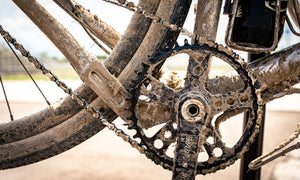
Features, Gravel, Guides, Latest Apr 1, 2024
Waxing Your Chain vs. Using Wet Lube for Dust, Mud, & Unbound Gravel
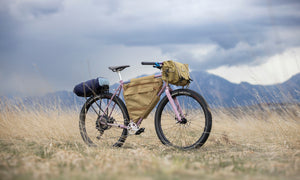
Bikes, Features, Gravel, Latest Mar 28, 2024
This Crust Bombora Shows Us a Different Side of Cycling
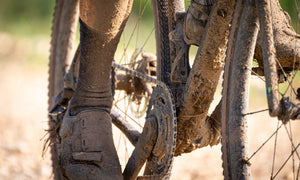
Features, Gravel, Guides, Latest Mar 25, 2024
1x vs. 2x: What Drivetrain Should You Race at Unbound Gravel?
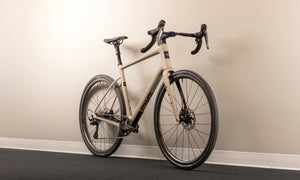
Bikes, Features, Gravel, Latest, Tech Mar 22, 2024
This ENVE MOG x Classified Bike Might Represent the Future of 1x
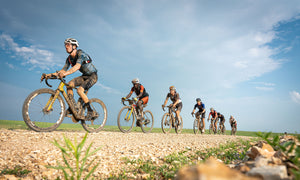
Features, Gravel, Guides, Latest Mar 21, 2024
Choosing The Best Tire Setup for Racing Unbound Gravel

Features, Fun, Gravel, Latest Mar 19, 2024
I'm Going Back to Unbound Gravel This Year (for Vengeance!)
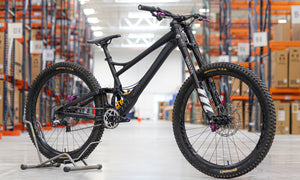
Bikes, Features, Latest, MTB Mar 15, 2024
Banshee Legend DH Bike Review: A Privateer’s Dream Bike
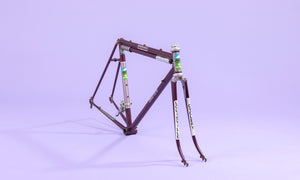
Features, Latest, Road, Vintage Mar 14, 2024
The First Frame I Ever Built
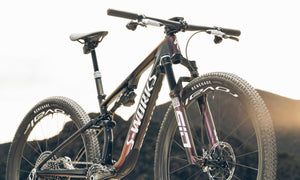
Features, Latest, MTB, Tech Mar 12, 2024
RockShox Flight Attendant: Will XC Welcome Its New Electronic Overlords?
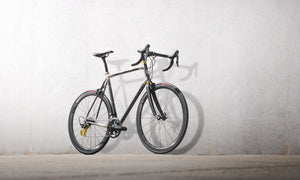
Bikes, Features, Latest Mar 6, 2024
The Seven 622 SLX: How Carbon/Ti Is a Bit Retro, but Also Maybe Futuristic
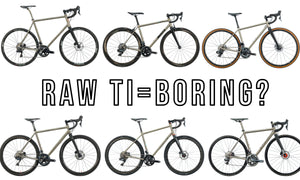
Features, Fun, Latest, Opinion Mar 1, 2024
Are Raw Titanium Bikes Too Boring?
New arrivals.
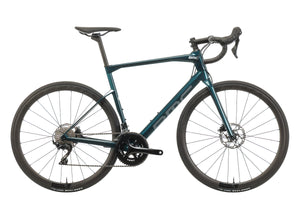
Certified Pre-Owned
BMC Roadmachine SEVEN Road Bike - 2022, 56cm
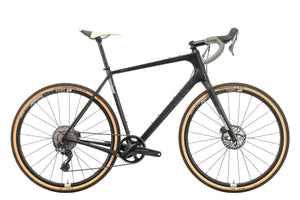
Salsa Cycles Warbird Gravel Bike - 2019, 59cm
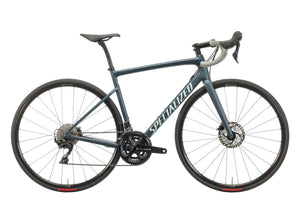
Specialized Tarmac SL6 Sport Road Bike - 2021, 54cm
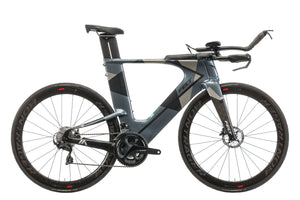
Felt IA Advanced 105 Triathlon Bike - 2023, 56cm
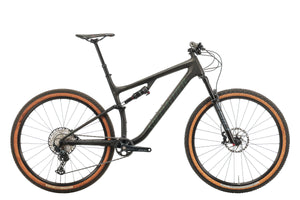
Specialized Epic EVO Comp Mountain Bike - 2021, X-Large
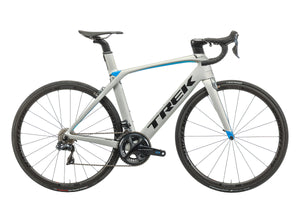
Trek Madone 9.5 H2 Road Bike - 2018, 54cm
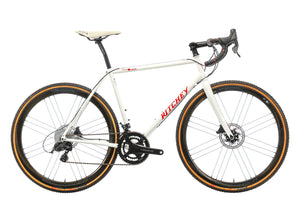
Ritchey Swiss Cross Cyclocross Bike - Large
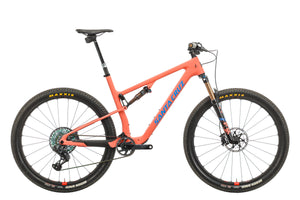
Santa Cruz Blur CC XX1 RSV Mountain Bike - 2022, X-Large
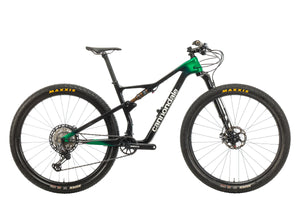
Cannondale Scalpel Hi-MOD 1 Mountain Bike - 2021, Medium
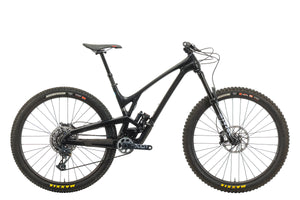
Evil Offering V2 Mountain Bike - Medium
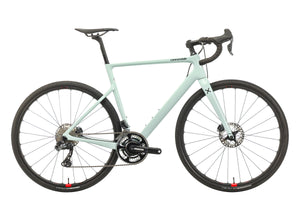
Cannondale SuperSix EVO SE Gravel Bike - 2021, 56cm
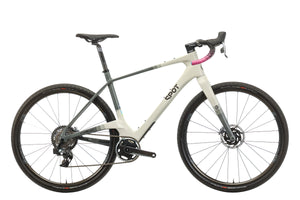
Spot Brand Rallye Gravel Bike - 2024, Large
When you use links on our website, we may earn a fee.
Best Beginner Mountain Bikes of 2024
Mountain biking is a great blend of exercise and outdoor adventure that draws in a wide range of recreational cyclists. The bar for entry into the sport is fairly low other than the initial cost of buying a bike, which ranges from several hundred to several thousand dollars. While you can easily spend more than $10,000 on a high-end mountain bike, we limited our selections below to more beginner- and budget-friendly options below $5,000.
Because it’s a significant purchase and there are lots of brands, models, and features to consider, beginner mountain bikers often get hung up on the decision. But if you have a budget in mind and understand the main features and your style of riding, you can narrow down your choices quickly. We talked to experts and did extensive research to identify the best beginner mountain bikes of 2024.
Table of Contents
- Best Beginner Mountain Bikes
- Things To Consider When Buying
- How We Chose
REI Co-op Cycles DRT 1.3 »

Extremely capable suspension
Brand-name components
Includes seat-dropper post
Limits you to mellower terrain only
Low-end front suspension
The REI Co-op Cycles DRT 1.3 is a lower-cost hardtail mountain bike that has most of the features of a modern mountain bike: disc brakes, 1x12 Shimano drivetrain, and Maxxis tires. It also includes a handlebar-controlled seat-dropper post which is an essential upgrade for riding a hardtail on more technical trails. From the RockShox front suspension to Maxxis Rekon tires and the Shimano Deore drivetrain, the DRT 1.3 gives you mid-tier components at a budget price point. Co-op Cycles is outdoor superstore REI’s house-brand bikes and, while they sell several cheaper mountain bikes in their line, the DRT 1.3 gives you worthy component upgrades that will translate into better performance and durability.
It also offers a bit more travel in the front suspension. Most budget hardtails use a cheaper 100mm- or 110mm-travel fork, which limits you to only the gentlest terrain. The hardtail DRT 1.3 has serious limitations if you plan to progress into steep, technical terrain, but there’s more room to grow here than with cheaper bikes better left on paved paths or gravel.
The 1x12 Shimano Deore drivetrain system eliminates the need for a front derailleur which simplifies shifting for learning riders to just one set of shifters instead of two. It also eliminates a common source of shifting malfunctions while maintaining a good range of gears to tackle a variety of terrain.
Trek Marlin 7 Gen 2 »

Great value
Lightweight for easier climbing
Lets you upgrade over time
Still uses name-brand components
Limits you to mellow terrain only
Rougher ride than full-suspension
Trek is known for quality mountain bikes, with high-end professional-grade models costing over $10,000. But it also knows that most new trail bikers aren’t ready to fork over that much cash, so it also makes much cheaper models such as the Marlin 7 Gen 2 that save around the edges but build on the same proven frame designs.
The Marlin 7 is a hardtail, which is a big reason why the cost remains under $1,000 (no expensive rear shock and mechanism. That means it’s best-suited for mellower trails, gravel roads, and paved paths. For the price, it’s also relatively light at just under 30 pounds, so it’s easier to pedal until you build up your fitness. The bike is highly upgradeable. However, if you find you prefer rougher, more technical terrain, you’ll eventually need to upgrade to an all-new full suspension bike.
That said, the components such as wheels, shifters, drivetrain, and brakes are all made by name brands in the industry, so they should perform better and last longer than the no-name parts used on department store bikes. They’re also easier for bike shops to repair or replace since they’re more common.
Canyon Neuron 5 »

A full-suspension mountain bike for less
More capable on technical trails
High-quality components
Efficient uphill for a full suspension
Limited on features and aggressive terrain
Higher initial investment than hardtail bikes
You may have seen Canyon bikes out on trails, but you’ve never seen them in bike shops. That’s because they use a direct-to-consumer model to keep the cost of their bikes (relatively) low. The Neuron 5 is their most affordable full-suspension bike, and it’s a great beginner option thanks to a low weight and efficient performance. (If you’re surprised that a $2,000 price point is “affordable”, read our FAQ on pricing below.)
While any full-suspension mountain bike offers a smoother ride than a hardtail, the Neuron 5 isn’t overly plush, fitted with a modest 130-mm rear travel and 140-mm up front that will soften the ride without making the bike too heavy or inefficient on climbs. The orientation of the rear shock keeps the bike’s geometry more rigid during climbs, which translates to more efficient power out of each pedal stroke. This is great for newer riders who haven’t developed as much sport-specific skill and power.
Despite the low price point, the component spec sheet features all respected name brands. The 12-speed Shimano Deore drivetrain is a reliable workhorse, front and back feature RockShox suspension, and the Schwalbe tires are light and fast. The biggest reason to spend more or look at other models is if you know you’re more downhill-oriented and want a plusher ride for more aggressive downhill trails.
Ibis Ripmo AF »

High-end components on a midtier bike
All-around capable
Modern geometry for stability and speed
Higher initial investment
Ibis is known for high-end performance bikes for a bit less than the luxury brands such as Santa Cruz and Yeti, and the Ibis Ripmo AF delivers modern full-suspension frame design and some higher-end components in a package that can be had for less than $3000. That price tag might not seem low to new bikers but similar bikes from other manufacturers can cost more than $5000.
The Ripmo prioritizes downhill capability more than most beginner bikes, with 140 mm of rear travel and 150 mm in front, so it’ll be ready for you when you’re ready to tackle steeper trails and bigger obstacles. That capability comes at a bit of weight penalty, with an overall weight of 34 pounds for a large. But it climbs well for what it is, and recreational riders who endure the uphill to enjoy a spicy downhill won’t mind.
There are cheaper full-suspension mountain bikes, but you get a lot with the Ripmo in terms of components. The SRAM GX/NX drivetrain gives beginners a taste of the high end in their shifting, and everything from the seat to the brakes comes from respected brands such as SRAM, WTB, and Maxxis. This is a great option for new riders who want their first bike to be as good as it can be without diving right into the high-end of the market.
Norco Sight A3 SRAM »

More travel than most beginner bikes
High-end components for a midtier bike
Bigger suspension for bigger descents
Beginner riders usually look for smoother trails and avoid fear-inducing obstacles such as rock drops and steep descents. But as your skills progress, you may find yourself seeking them out. While by no means a downhill-first bike, the all-mountain Sight A3 comes with more travel than most beginner mountain bikes, with a 160-mm RockShox Yari fork in front and 150-mm RockShox rear shock.
The overall package is on the heavy side, but it still pedals uphill well and uses smart design to help you get out most of the power you put in to each stroke, especially on more technical climbs. You also get all the expected trappings of a high-end bike, with a quality SRAM SX Eagle drivetrain, tubeless Maxxis tires, and seat-dropper post. Overall, it’s a great all-around bike for riders that are getting into the sport at least in part to chase the adrenaline high of challenging descents.
The 2024 Sight A3 made some fairly substantial changes to the rear suspension mechanism, so the 2023 model (linked above) can be had for less for entry-level bikers who can do without the newest tech.
Trek X-Caliber 8 »

Efficient power transfer
Lightweight for the cost
Easy to upgrade components
Good for gravel, mellow trail, or pavement
No dropper post included
Limited on tougher terrain
If you’re getting into mountain biking more for outdoor time and fitness than the adrenaline rush, a cross-country oriented hardtail like the X-Caliber saves you weight and money and delivers efficiency for long rides. You can easily spend 2-5x the cost of the X-Caliber on a XC bike (check out the short-travel full-suspension Supercaliber ), but the X-Caliber gives you a solid hardtail base with mid-tier components that can be upgraded over time.
If you spend most of your time on trails, even mellow ones, a seat-dropper post should be your first upgrade; it will make the hardtail platform less frightening on more challenging descents. But out of the box, the 110-mm RockShox fork, Bontrager hubs and rims, and Shimano XT drivetrain are an improvement over lesser components in exchange for a slightly higher price tag.
The X-Caliber is a great option for spin class junkies who want to take their love of pedaling outside, aspiring racers, and endurance junkies chasing course records instead of adrenaline rushes. The level of suspension is plenty for mellow trail rides and it won’t feel sluggish when logging miles on gravel or pavement.
State Bicycles 6061 Trail+ Fat Bike »

Plusher, more stable ride
Better for larger riders
More capable on sand or packed snow
Slower than regular mountain bikes
More effort to control
Less upgradeable as skill progress
Fat bikes are often considered a niche product for winter biking or casual cruising, but they can be a great first bike for the right type of beginner. Fat bikes such as State Bicycles’ 6061 Trail+ Fat Bike use much bigger tires than traditional mountain bikes; the tires also are run at lower pressures and thus act like suspension without adding expensive shocks.
The bigger, softer Kenda Juggernaut tires on the 6061 Trail+ deliver a much more plush ride on rougher trails, and the lack of suspension means a simpler bike design that’s easier to maintain and repair. It’s also much more sure-footed in the hands of a novice and can be a great way to get comfortable with mountain biking. Plus, it has the distinct advantage over traditional bikes of being capable on sand if you’re a beachgoer and on packed snow if you want to keep biking through the winter.
The downsides are a higher price than a hardtail and higher weight, which makes it tougher to pedal uphill and more difficult to deftly guide through techy terrain. As your skills and fitness progress, you’ll eventually want the lighter weight and agility of a traditional mountain bike, so it’s also harder to grow into intermediate riding. The weight penalty and cost scares most beginners away from fat bikes, but the affordable State 6061 Trail+ costs much less than most fat bikes and could be a great starter bike for those who want maximum stability and traction, as well the ability to navigate soft sand and/or packed snow.
The Bottom Line
Modern mountain bikes are lighter, faster, and more fun than ever, but they don’t come cheap. Ultra-cheap options sacrifice too much durability and performance to be worth considering, so look for a brand-name bike with lower-tier components from trusted brands to keep your initial cost down.
Going with a hardtail such as our top overall pick, the REI Co-op Cycles DRT 1.3, over a full-suspension bike can cut costs significantly, but consider the terrain you’ll be riding and how much you want to progress since hardtails can be limiting. If you’re willing to spend a bit more for a plusher ride and more room to grow with your bike, we like the Canyon Neuro 5 as a more affordable full-suspension option for beginner mountain bikers.
Things To Consider When Buying Beginner Mountain Bikes
Bike Fit and Size: No amount of tech and features can make up for a bad fit with your mountain bike. Too big, and you’ll struggle to move it around quickly and deftly. Too small, and you’ll lose stability and increase your risk of crashing. More expert riders develop a feel for the right fit, but beginners are best served by visiting a bike shop that can lead you through the process and seat you on actual bikes.
Sizing and geometry can vary widely between manufacturers and models, so don’t assume that if a “large” bike from one brand fits you well, you’ll love that size for any bike. "If a bike isn’t fit properly, it can lead to injury over time, so it’s important to work with a knowledgeable expert to be properly fit to your bike," says Colin Edwards, a bike buyer for Evo . He suggests visiting a larger bike retailer that have you try a range of different bikes and sizes to find the best fit for your body and riding style.
Suspension Type: The big question for most beginner mountain bikers is whether to go with a hardtail or full-suspension bike. Hardtails have front suspensions but are rigid in the rear of the frame. This provides more efficient power transfer and is usually lighter, but limits your ability to tackle more technical terrain.
Full suspension bikes have come a long way and use smart designs and modern materials to keep weights as low as possible and minimize efficiency differences. However, the substantial increase in cost when jumping to a full-suspension bike makes hardtails an attractive option for newbies on a budget.
Emma Dunn, a Colorado-based mountain biking instructor and former racer, says beginner bikers often start with hardtails for the lower cost. But she warns that this can hamper their growth. “People think full suspension is heavy, and the bikes really used to be pigs,” she says. “But if students show up on a hardtail with no dropper post, it’s kind of limiting as to how they can progress. Nowadays, if you get a shorter-travel full-suspension bike, they’re perfect.” Still, hardtails can meet your needs (and save money) if you plan to mostly ride flatter, gentler terrain and focus more on longer rides than technical descents
Frame material: Today, most mountain bike frames are made from either aluminum or carbon. (Steel frames are heavy and unforgiving and found mostly in ultra-cheap bikes.) If you’ve shopped for bikes at all, you’ve probably noticed carbon frames can add hundreds, if not thousands, of dollars to the cost.
Carbon composites are lighter than aluminum in general, but for beginners, that savings of around 1 to 2 pounds is likely not worth the cost jump. Advanced riders prefer carbon, as the material’s characteristics simultaneously help dampen rough terrain better than metal and deliver better power transfer. These are subtle differences to pick up on for a novice rider, however, and there are better bang-for-your-buck upgrades in components unless budget simply isn’t a concern.
Wheel size: Wheel sizes used to be a hotly debated topic, but the mountain bike marketplace has largely settled on 29-inch wheels as the best size for most riders. (Smaller riders may prefer common 27.5-inch wheels, which are also common.) While 29-inch wheels accelerate more slowly and are less nimble on tight terrain, most expert riders choose them for their increased traction and improved ability to tackle large obstacles. They're also more efficient once up to speed, requiring less work than smaller wheels over the duration of a ride.
The biggest exception to this is for smaller riders, who may struggle to gracefully maneuver the larger wheels. They can benefit from 27.5-inch wheels, or a “mullet” that puts a 29-inch wheel up front to tackle obstacles and a 27.5-inch wheel in the back to make the bike more nimble.
Price: Mountain bikes have gotten both much better and much more expensive in recent years. Experts who we spoke with cautioned against spending any less than about $700 on a hardtail or less than $2,500 on a full-suspension mountain bike.
The downsides of cheaper bikes show up in performance, weight, and durability. No-name bikes and components suffer from more quality control issues and can be harder to repair, and their increased weight and inefficiency lead to a sub-par experience. If you buy a slightly more expensive bike and end up not sticking with the sport or just find you want something different, sites such as Pinkbike and The Pro’s Closet make it fairly easy to sell a used mountain bike.
“For your bike, you want to go with an established brand," Dunn says. "For drivetrain, you want SRAM or Shimano. Even the lower-tier components from name brands are easier for mechanics to repair or replace. Cheaping out usually leads to failures.”
How We Chose The Best Beginner Mountain Bikes
Our contributor Justin Park consulted mountain bike coaches, bike race directors, and bike company product managers to assemble our guide to the best beginner mountain bikes. These included Emma Dunn, a mountain bike coach and former racer; Stuart Sundell-Norlin, of Bike & Nordic at Christy Sports ; Andy Tesch, co-owner of Wilde Bicycle Co. ; and Colin Edwards, buyer at Evo for bikes and bike apparel.
With so many options and such a wide range of price points, Park then filtered the pool of bikes considered with additional research on brands and models to select our top picks. For each bike, he evaluated components such as drivetrain, suspension, and brakes. He also identified what sets each bike apart from similar offerings in the same category. He focused on bikes that provide great value for the class they fall within, rather than ones at the high end of the price spectrum.
WHY YOU SHOULD TRUST US
Justin Park is an experienced outdoor equipment expert specializing in mountain bikes, snow sports, and backpacking equipment. His award-winning journalism has appeared in national magazines, newspapers, and digital outlets from Popular Mechanics to Bicycling. He has worked in the mountain bike industry for the past 15 years and rides almost daily near his home in Breckenridge, Colorado.
Mountain bikes have improved in design and performance over the past two decades, but the prices have climbed along with the improvements, so as with any purchase, only spend what you can afford. Expect to spend at least $700 for a decent hardtail mountain bike and $2,500 for a quality full-suspension bike.
There are a lot of ultra-cheap options below these thresholds, but they usually have a sharp drop-off in performance and durability, so it's smarter to spend more. Most shops will let you take test rides or demo/rent a bike for a few days, which is the best way to test fit and get a feel for the type of bike you prefer.
A hardtail bike has front suspension, while a full-suspension bike has both front and rear shocks that make for a smoother ride on rough trail. Hardtail bikes are cheaper than full-suspension bikes in general and require more skill to use on rocky and rooty trail. Full-suspension bikes are heavier, though higher-end full-suspension bikes weigh less and climb more efficiently than the downhill-oriented full-suspension rides of years past.
If budget is a primary concern and you don’t intend to ride many rough, technical trails, a hardtail bike will be plenty capable and is often half the cost. If you’re planning to ride a lot of rocky or rooty terrain, it may be worth spending more upfront to get the smoother ride of a full-suspension bike.
For new mountain bikers, the material used for the frame of a mountain bike isn’t something to agonize over. Most lower-cost bikes use aluminum or alloy frames that are light but not as expensive as carbon frames, which cost hundreds or thousands more. Carbon frames are a bit lighter than aluminum, but that doesn’t justify the price difference for most riders who aren’t racing.
Yes, beginner mountain bikes generally share very similar builds to more advanced (and more expensive) bikes. The biggest difference for most beginner bikes is that they use cheaper components. However, most bike components can be upgraded one at a time as they wear out, break, or you simply outgrow them as you improve.
About Our Team
Justin park.
Contributor

Jeff Kinney
Senior Editor
U.S. News 360 Reviews takes an unbiased approach to our recommendations. When you use our links to buy products, we may earn a commission but that in no way affects our editorial independence.

IMAGES
VIDEO
COMMENTS
Travel is simply the maximum distance that either the front or rear suspension of the Mountain Bike can compress, when absorbing force, before bottoming out. The higher the travel the more force the suspension can comfortably absorb. The lower amount of travel the lower amount of force absorbed. Specialized FSR Suspension.
In case you're new to riding, mountain bike suspension travel is a measurement of how much a wheel can move to absorb bumps. On the front, mountain bike travel comes from your suspension fork. At the rear, MTB travel is provided by some configuration of frame pivots that compress a rear shock. Going big is easier on my 150mm enduro bike.
In short, you should consider the following: 1. Bike & wheel size. 2. Bike type (hardtail or full-suspension) 3. Type of mountain biking (cross-country, trail, enduro, downhill) The article explains mountain bike types, bike frame materials, suspension types, wheel sizes, components, and more. 2.
Too much travel can also dull the feedback of your trail bike. We recommend that a trail fork ideally have 34mm stanchions, at 130-140mm, for a 29er - possibly, up to 150mm, for the smaller 27.5in wheel size. As fork travel increases with trail bikes, the latitude of responsiveness from your damper becomes more complex.
Mountain biking travel is a term that indicates the distance of movement for any moving parts. Before, travel only referred to mountain bike suspension, but now it also incorporates dropper seat posts. The travel distance is typically measured in millimeters (mm) and can range from 80mm on cross-country bikes to 200mm or more on downhill bikes.
Suspension Terminology. Bottom-out - Refers to the shock or fork reaching the limit of its travel. A fork should only bottom out occasionally. Regularly bottoming out means it's set too soft; never bottoming out means it's too firm. Compression damping - Controls the rate of compression when the shock is under load.
Mountain bike travel refers to the suspensions of the bike and how much they can "travel" which is the distance that they can move up and down as you hit the bumps in your path. This travel distance tends to be different when it comes to the front suspension vs the rear suspension. There are a lot of different things that can affect the ...
Travel ranges from about 80 - 220 mm (~3-8 inches) and is trail & terrain & rider dependent. There are some general rules for riding style & front suspension travel: " Blow through: When a bike uses all its suspension travel, it blows through it. ". — Clive Forth. Short travel: 80 - 120 mm. Cross-Country (XC) MTB.
A travel bag is a great option for those flying with their bike or simply looking to maximise the amount of space in their car when travelling to their mountain bike mecca. Bike bags are a worthwhile investment in ensuring your ride gets to its destination safely; however, they do require a little bit of DIY knowledge to pack and unpack.
Enduro bikes (sometimes called all-mountain bikes) are generally for slightly more advanced riders, though they're also a good bet for anyone who plans to ride boulder-laden or steeper trails. Travel is usually in the 150-180mm range, and the bikes tend to be burlier, stronger and built for bigger jumps and harder landings.
How much suspension travel do I need on my mountain bike? | BikeRadar.
Downhill bikes are the most aggressive of all mountain bikes, meant for downhill performance. 8″ of suspension travel helps smooth out big bumps and drops, while big hydraulic brakes provide ...
Travel on a mountain bike refers to the amount of suspension travel the bike's front and rear can provide. Suspension travel is the distance the suspension can compress and rebound, measured in millimeters (mm). Mountain bikes are designed to handle rough terrain and uneven surfaces, so good suspension travel can significantly absorb the ...
All mountain bike suspension, whether fork or rear shock have 2 main functions which are performed by the spring and the damper. The spring primarily provides resistance while the damper provides the control of that resistance. There are two types of springs: air and coil. Air Springs.
More movement means more travel, and more travel means greater cushioning under compression and impact. Thus, basic suspension systems, such as those on hybrids and kids' bikes have little travel. All-mountain and trail bikes have the most travel. Travel Distance. 30-50mm - Kids' bikes; 60-80mm - 24″ kids' bikes, hybrids
But even if we take the 0.8 percent difference at face value, that's about what we'd expect from the weight difference between the two bikes alone, suggesting the travel per se (i.e. the ...
Trail Mountain Bikes. 100 - 140mm travel range. 27.5" or 29" wheels. Slack head tube angles around 67 degrees. Prices start at $800 for a decent one. Trail bikes are some of the most popular all-rounder mountain bikes to get. Trail mountain bikes are cross-country bikes with slacker geometry and more travel.
Choosing the best mountain bike for your type of riding can be tricky, the good thing is that there are some general rules that define what category bikes are placed in to make things easier. Continue reading and we'll give you a rundown of the basics and then discuss how bikes are constantly evolving, and with that, blending the different types of mountain bikes and mountain bike disciplines.
Mountain bike jargon can be confusing, so we are explaining it all in a no-nonsense way. ... Mountain bike terms, explained and demystified ... including fashion, food, drink, travel, and grooming ...
[button]Shop Mountain Bikes[/button] Cross Country (XC) Mountain Bikes. The Canyon Lux is light and efficient for competitive XC racing. Suspension travel: 60-120mm Climbing / descending performance: 80% climbing / 20% descending What are they: XC bikes are made to excel at cross-country riding and racing. They are generally the lightest mountain bikes and have geometry designed for quick and ...
The REI Co-op Cycles DRT 1.3 is a lower-cost hardtail mountain bike that has most of the features of a modern mountain bike: disc brakes, 1x12 Shimano drivetrain, and Maxxis tires. It also ...